Movie Review By: SFAM
Year: 2006
Directed by: Christian Volckman
Written by: Alexandre de La Patellière, Mathieu Delaporte, et al.
IMDB Reference
Degree of Cyberpunk Visuals: Very High
Correlation to Cyberpunk Themes: Medium
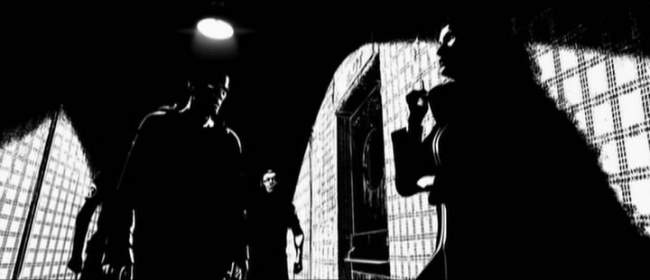
Overview – Good luck in finding a copy! Once upon a time, Renaissance was one of my most anticipated movies of 2006. Originally released in France on March 15th, I eagerly awaited its September release in the US. My anticipation was heightened in that I was even contacted by Miramax representatives as part of a pre-hype blitz. So imagine my surprise when its release in the US only comprised a few select cities – unfortunately my city didn’t make the cut (thanks Miramax!). Similar to so many other good, but foreign science fiction and fantasy flicks, instead of getting a nice theatrical viewing, I was yet again forced wait and then later buy an import (or pirated – sometimes you just aren’t sure) DVD off of eBay. If you are in the US and are interested in seeing Renaissance, chances are you’re in the same boat. One would have hoped that a movie as visually stunning as Renaissance would have been at least able to quality for a DVD release, but clearly something larger is going on here as many other foreign genre films are in the same boat.
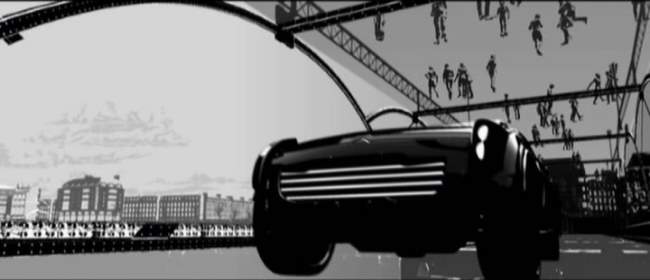
The Setting: In the year 2054, mega-corporations are all-powerful, with tentacles in all aspects of life. The divisions between rich (megacorps) and poor are greater than ever. Paris has grown in layers, with high-tech buildings pushing every further into the sky. Although the city is sleek and stylish, most people live a pathetic existence. In Paris, the Avalon Corporation rules the cityscapes. The police force is not immune from their pressures, and often become their lackeys.
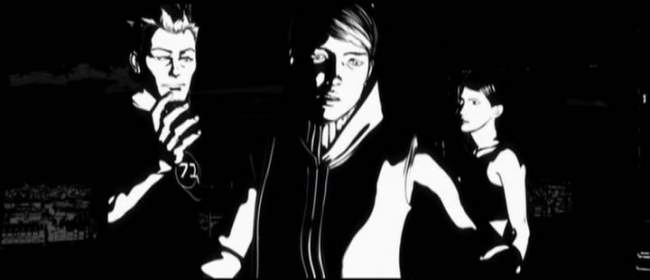
The Story: When a promising young biogeneticist named Ilona (voiced by Romala Garai) from the Avalon Corporation is kidnapped, detective Barthélémy Karas (Daniel Craig) and his team are brought in to investigate. As Karas interviews all the key players, it becomes clear that this isn’t a simple missing person case, as the details of the disappearance become increasingly more bizarre and complicated. The Avalon corporation president, Dellenback (Jonathan Pryce), not known for his loyalty to his workers, is extremely interested in her return. Ilona’s bioengineering mentor has a strange past, and stopped doing research after an accident from 2006. Karas befriends Ilona’s older sister, Bislane (Catherine McCormack), who tells of a stolen book.
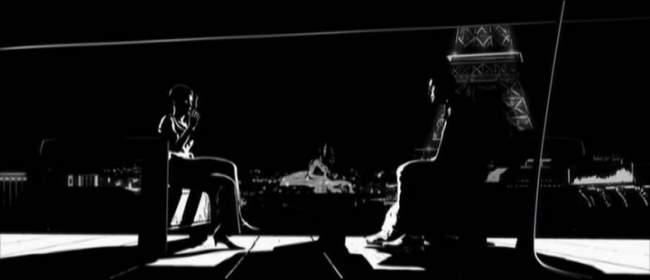
Similar to Howard Hawks’ “The Big Sleep” (1946), Karas spirals back and forth between the key players as more clues are provided. Karas uncovers a darker side of the Avalon Corporation, and of Ilona’s mentor, Dellenback. Furthermore, it appears that the secret to immortality has been discovered, and is tied to Ilona herself. As Karas and Bislane continue searching for Ilona, the list of enemies grows. The key players are getting offed, Karas is booted from the force, and is now in fear of his life. Worse, they are discovering that humanity itself may be at risk if Ilona is found.
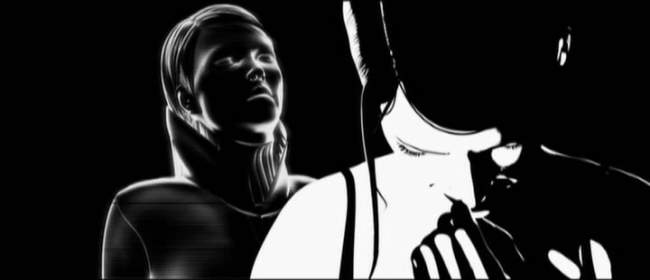
The Characters: It’s not a stretch to say that virtually every character in Renaissance comes “cookie cutter” from the old noir movies, with a nice slice of traditional cyberpunk thrown in the mix. From the honest but jaded crusty cop with a soft spot to the megalomaniac mega-corporation leader, to the shady friend the cop goes to when he needs a favor to the femme fatale; don’t expect freshness, because it isn’t coming. Like the old noirs, everyone in Renaissance is flawed; everyone is gray – which does make for an interesting contrast when transposed on such stark black and white animation.
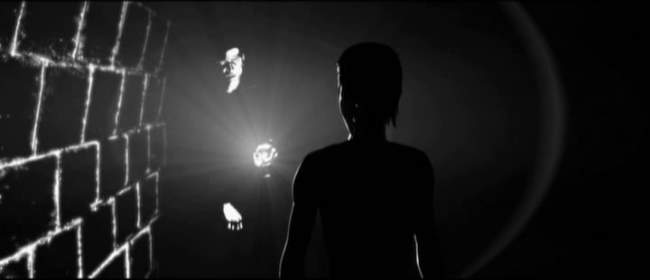
The Atmosphere: While the story falls short, the look of Renaissance fully original and is flat-out amazing. If Renaissance is best described as style over substance, the style really comes STRONG to the party. Stark black and whites dominate virtually every shot. Shadows are in abundance, and usually highlight the main action points. Gray is used sparingly, and is usually applied to change the mood of the scene. To its credit, Volckman succeeds at creating a near-future world that is deeply flawed but not overly futuristic. The cityscapes are incredibly detailed, and give the impression that there are always a bevy of interesting happenings occurring. A transparent glass-like substance is now used to make walkways above and below the roads – this more than anything creates a sleek, near-future ambience. The stark black and white look of Renaissance works well both in the daylight and evening shots, both having shadows prominently placed in virtually every frame.
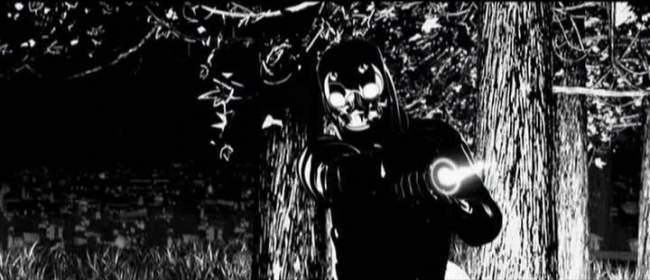
Traditional cyberpunk conventions are often applied, including huge billboards of beautiful women that extol the virtues of the Avalon Corporation. Avalon fills the role of the dominating mega-corporation that owns and controls virtually everything in Paris. Nothing is beyond their grasp. The police are on their payroll, and the entire city appears to be under surveillance. Immortality, derived through advances in bioengineering (initially undertaken by a Japanese scientist) is the dominating technology intended to challenge God’s position over humanity.

Similarities with Sin City: Volckman stated he was interested in creating a visual feel similar to what one might get when looking at a painting. In terms of what was produced, yes, the look is definitely similar, but Renaissance is not copying Sin City. Although Sin City came out first, Renaissance started its production far before Sin City. In terms of look, Renaissance really does match very closely with the Sin City graphic novels – more so than Sin City in fact. But while it also is a neo-noir, the dialogue and mood of Renaissance is far more like a corporate espionage version of a standard 40s detective noir (think “The Big Sleep” with corporations instead of the mob), whereas Sin City had more of a hyper-real, over-the-top neo-noir feel.
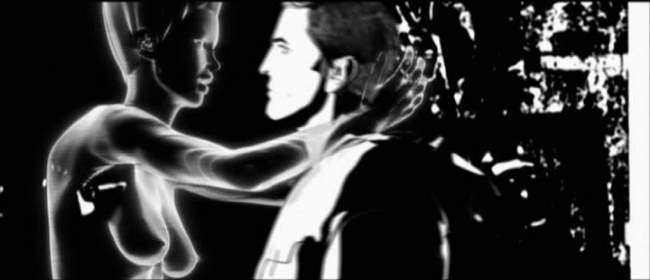
The Animation: Using an innovative motion-capture to rotoscope approach, where 24 cameras are used when shooting the actors, Volckman was able to work on the framing and viewpoint well after the shoot was complete, and then paint on the black and white animation. Unlike Linklater’s rotoscoping, where the actors’ faces and body appear to be constantly shifting, the level of precision used in Renaissance is significantly higher. When moving, the sprite’s actions are incredibly human-looking. There is a slight lag though when they first take action – a noticeable lag that’s slower than you would expect a person’s actions to be.
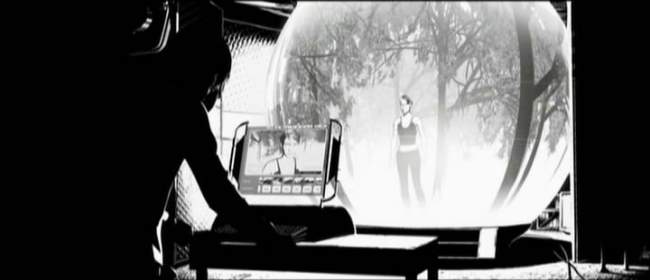
The Technology: While the basic story for Renaissance is straight cyberpunk neo-noir, the technology options provided are numerous and fairly interesting. Most visually arresting was the Holodeck sphere prison where Ilona is kept. Karas had a very advanced cybernetic eye implant that allowed him to identify people through solid objects – it also was able to be hacked by Avalon, the Mega-corporation. Computers are slick, now often just the size of a pen with a virtual display that arises upon command. Biotechnological modifications are in vogue, although not at the level of Ghost in the Shell. Similar to Motoko’s invisibility suit, the goons at Avalon have similar suits, although they look more like the soldiers in Jin-Roh than they do the hawt, naked Motoko. Holograms are now used in combination with pictures to remember people and events – in some cases, holograms interact with their human counterparts.
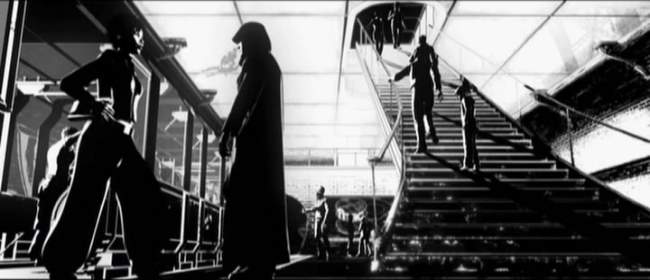
Do you Want to Live Forever? One thesis of Renaissance is the notion that immortality, if invented, would destroy humanity. Not a lot of backing is provided for this idea, but the idea put forward is that this irrevocable change in the hands of a mega-corporation would provide a method of control so powerful that society would no longer function. This is all the more interesting in that some are predicting that humanity will have the equivalent of immortality within the next 50 years. If this comes to pass, will the possibility of immortality be distributed evenly or will this be a tool of domination similar to in Renaissance?
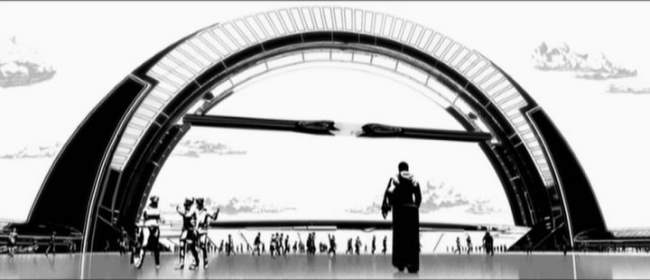
The Bottom Line: Although the story and characters are not original, the animation and overall cinematography is both innovative and outstanding, and should not be missed. There is truly something unique in the look here that you just won’t find anywhere else. The voice and motion acting are more than passable and Nicholas Dodd’s score provides a wonderful combination of a 007 espionage flick with the haunting eeriness of the score from Stargate. As icing on the cake, the science, technology and architecture exhibited in Renaissance will make you think. It may be hard to find, but it’s well worth the time spent looking for it.
Page 2, More Screencaps–>
~See movies similar to this one~
Movie Review By: SFAM
Year: 1994
Directed by: Peter Hyams
Written by: Mike Richardson & Mark Verheiden
IMDB Reference
Degree of Cyberpunk Visuals: Medium
Correlation to Cyberpunk Themes: Medium
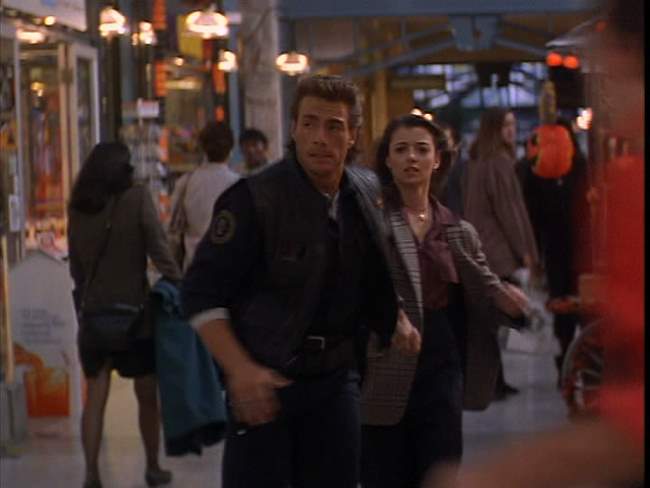
Overview: In the annals of cheesy time travel movies, few are known better than Timecop, which cleared over 100 million in world wide box office gross. Starring martial arts star, Jean-Claude Van Damme, Timecop has decent but low-budget FX, a fairly shallow notion of science and time quandaries, but does provide a face-paced cyberpunk action-thriller with decent amounts of butt-kicking and gun fighting. Like many of his movies, Van Damme plays more than one version of himself – in this case, he plays himself 10 years into the future.
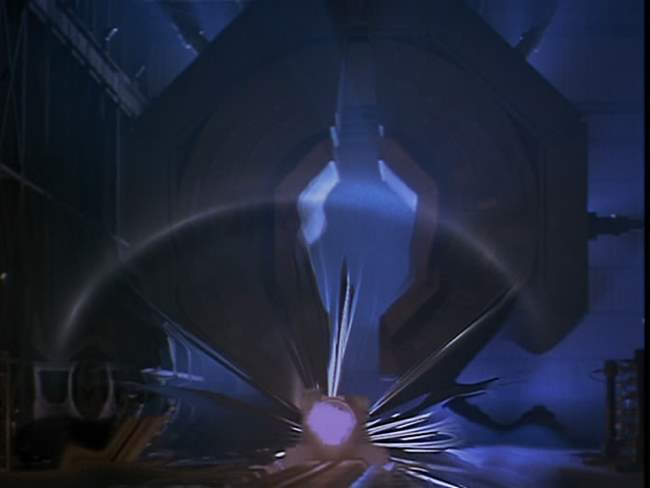
The Story: In the near future (2004), time travel has now become possible. Unfortunately, there is a very real danger that going back in time will alter the present. To protect against potential abuse, a special police outfit called the “Time Enforcement Commission” is established to monitor and enforce time travel concerns. Max Walker (Van Damme) is selected for an interview to join. Unfortunately, events in the future have already changed his current circumstances, which lead to the death of his wife, Melissa (Mia Sara).
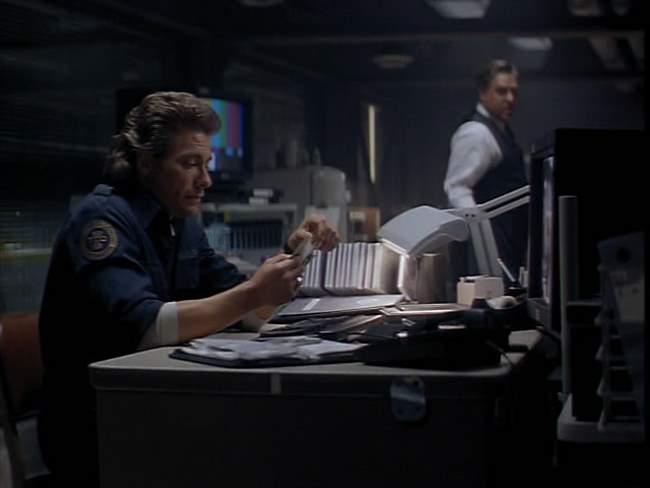
Ten years into the future, Max, still working at the Time Enforcement Commission, goes back in time to stop his former partner from attempting to splurge on low-price stocks in 1929 that will be worth a fortune in the future. In stopping his partner, Max uncovers a larger plot of time travel tampering that implicates a sitting Senator of the United States (Ron Silver). As Max starts to investigate, the bad guys begin significant tampering with the timeline. Upon return from one of Max’s fact finding trips, he sees that the future has been significantly altered, and the police force is being decommissioned.
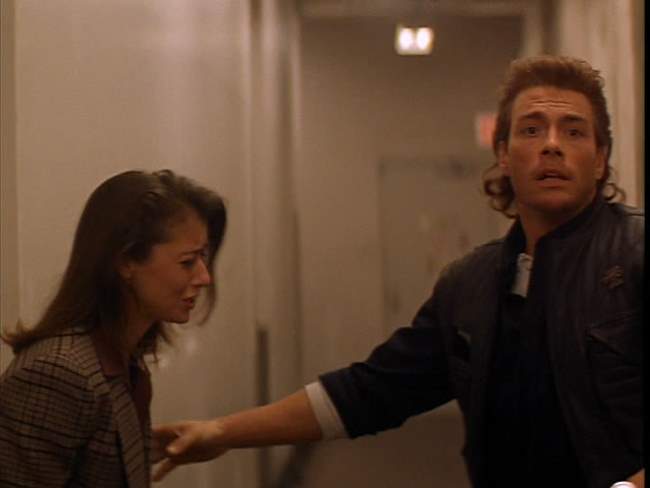
Max convinces his former friend (the time altering apparently has affected their friendship) and police Commander, Eugene (Bruce McGill), to send him back in time to fix the damage done to the timeline. In doing so, Max has an opportunity to go back and save his wife. Things come to a head when Max and the Senator meet face to face (both current and future versions of each).
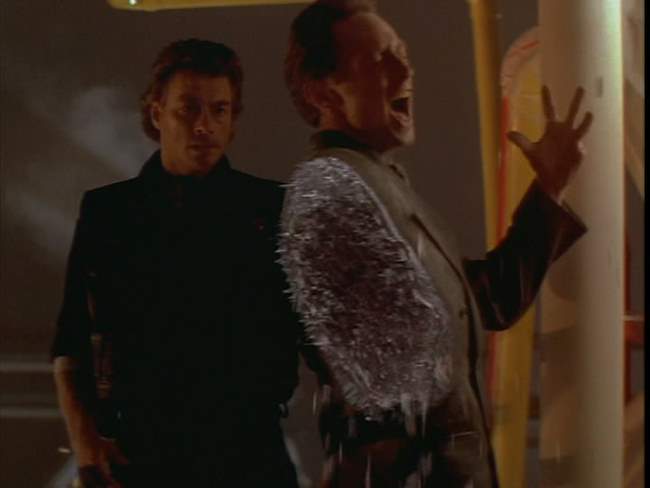
The Action: The reason you want to watch Timecop is primarily for the fast-paced action sequences. We get lots of Van Damme kicking, along with a nice smattering of gunfights, all in interesting locations. As a downside, only one or two of the bad guys put up a decent fight. So many of the action scenes involve Van Damme just wailing on “red shirt” henchmen.
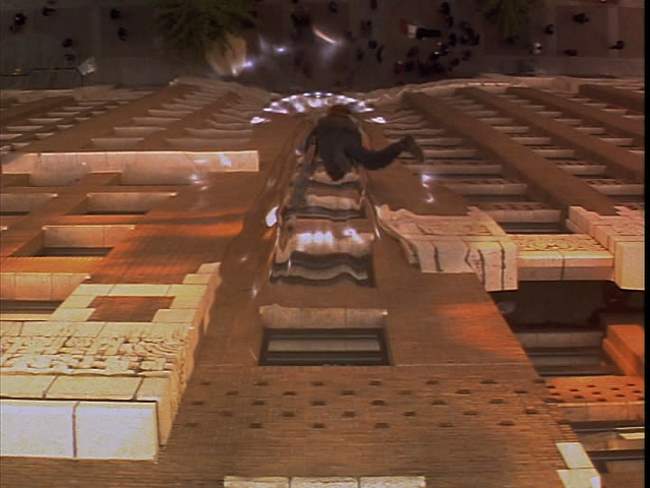
The FX: The FX for Time Cop worked at the time, but now look somewhat dated. There are quite a number of time portal effects, along with a few burning and “people plasma” shots sprinkled throughout. The set designs are pretty decent, most notably the time portal device, which has a nice dirty, low-tech feel to it. Still, I wish they had done more with the time travel machine, which looks and works like a rocket version of Back to the Future’s flux capacitor.
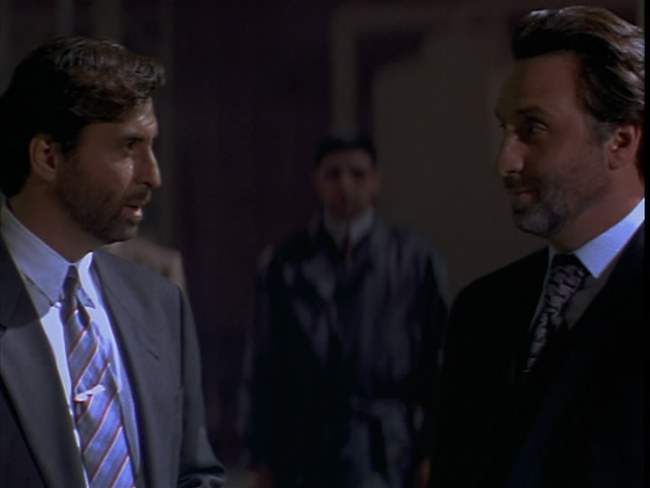
The Acting: Considering this is a Van Damme movie, the acting is somewhat better than expected. Van Damme is his same self, which is to say “rather wooden.” But Mia Sara, Ron Silver and Bruce McGill turn in decent performances – certainly decent enough to work with the fast pacing.
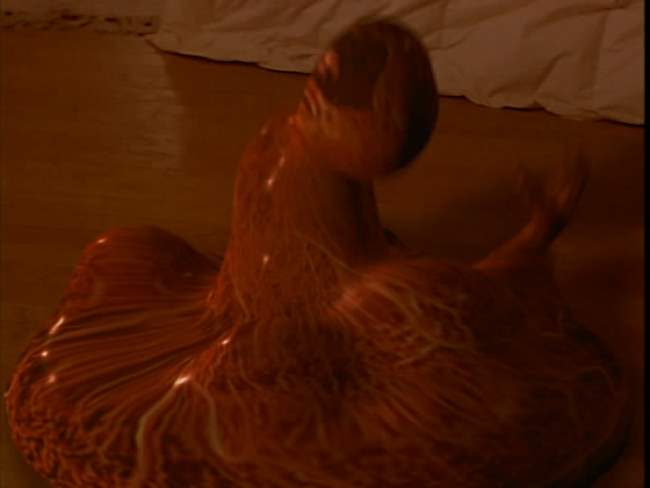
Problems with Time: Timecop really can’t be used to spark interesting discussions on time travel. The questions with how and why things work are too numerous and problematic to engage in interesting discussions. Somehow, they are able to determine if someone has violated time, and can go and stop them, but they don’t seem to be able to go to the same place more than once – why? The same two people cannot occupy the same space – why? What happens if a guy is 80 years older and goes back an visits himself as a small child? Virtually none of the same cells will remain from the child – certainly no skin cells (nor would they for 10 years out, as was the case for the poor Senator) – so how does this constitute occupying the same space? When Max Walker spends the day jumping through time, the future is modified – and he seems to have lost 10 years worth of memories. What happened to the version of Max that lived those 10 years? Did he disappear, or has he simply not gotten home from work yet? One gets the sense that Max is just jumping alternate versions of the present – each one that he created – but the ideas are too shallow to make any real sense of this.
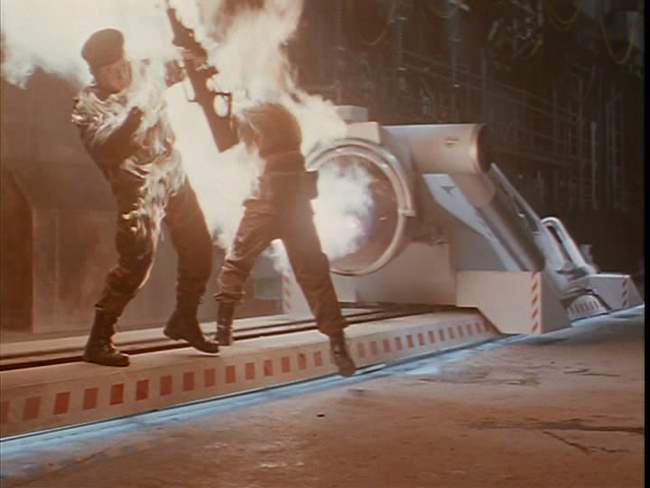
Bad Guys Have Limited Imagination: Like many bad guys, the imagination of the evil doers in Timecop is severely limited. Time travel is used to go back and engage in bank heists, make stock purchases that pay out 70 years in the future, and so forth. If one really had this technology cornered, it seems that there would be far better ways to generate income. With just an ounce of imagination, one could come up with a myriad of more interesting ways of generating power and influence than petty crime. What about a recorded interview with Jesus Christ? One would think this might generate lots more power and income than knocking off a confederate wagon train shipping small quantities of gold. Instead, the extent of Senator McComb’s ambition is to get rich, kill off potential enemies and then steal the presidential election.
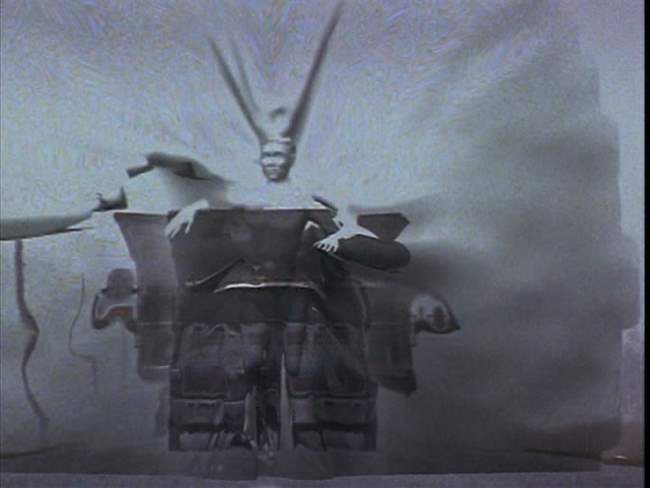
The Bottom Line: Timecop is an enjoyable movie assuming you turn your brain off prior to watching. This approach generally works as the fast-paced nature of the movie serves to stop you from noticing too many issues. The action is good and the FX are passable, so if you want to kick back and enjoy some Hollywood martial arts wrapped up in a cyberpunk time travel flick, give it a go. I will say though that the quality of the DVD is horrid - so much so that I’m docking a star from my review. It’s got a lousy transfer, no extras, and is in full screen only. Common Universal – fix this!
~See movies similar to this one~
Movie Review By: SFAM
Year: 2002
Directed by: Kurt Wimmer
Written by: Kurt Wimmer
IMDB Reference
Degree of Cyberpunk Visuals: High
Correlation to Cyberpunk Themes: Medium
Key Cast Members:
Cleric John Preston: Christian Bale
Dupont: Angus Macfadyen
Errol Partridge: Sean Bean
Brandt: Taye Diggs
Jürgen: William Fichtner
Mary O’Brien: Emily Watson
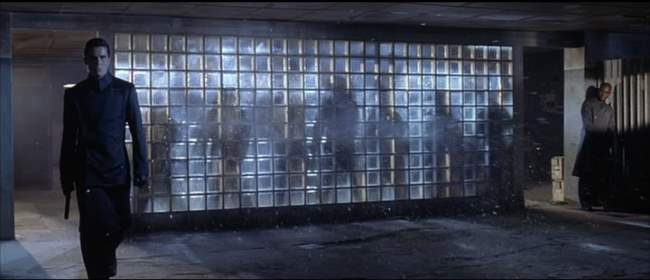
Overview: Equilibrium is one of those movies that most everyone who knows of it has only seen it on DVD. Essentially thrown away by its studio, Equilibrium, created for a budget just over 20 million was given no dollars for marketing and made less than a million at the box office. But don’t let that sway you into thinking this movie is a piece of trash. Equilibrium has become a cult DVD hit. Made in Eastern Germany portion of Berlin, Equilibrium looks lots more substantial than the 20 million that went into it. Due to some terrific location choices, Equilibrium shines with a polish of a movie made for at least twice that budget. This, plus high quality acting and at least a modicum of interesting thought raise Equilibrium up from the pop-FX action-fest that it otherwise might have become.
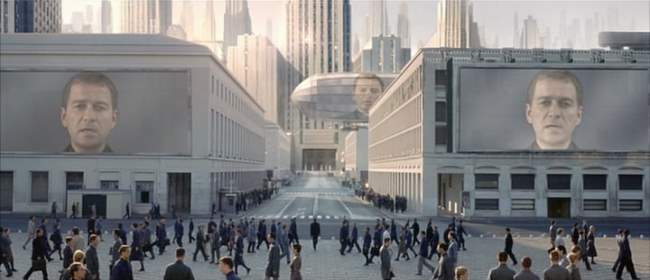
The Setting: Set sometime in the 21st century, after a massive nuclear war has wiped out the majority of the human race, a 1984 style society has emerged after a method of full population control was discovered. The entire population is now given a daily dose of a drug called of Prozium. Prozium removes all semblances of emotion, and leaves the populace docile and controlled. Exhibiting emotion is now considered the greatest of all crimes, and is punishable by death. The all-knowing, all-controlling “Father” has constructed a group of supra-police called “clerics” who spend their time seeking out “sense offenders” and burning all remnants of the old way.
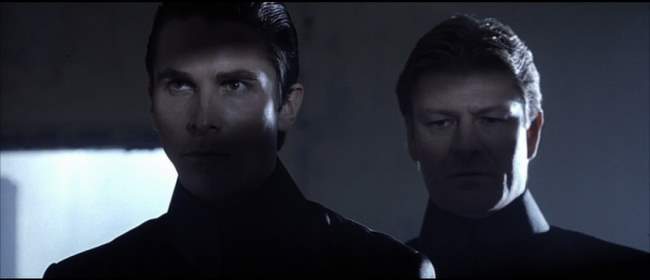
The Story: Cleric John Preston (starring Christian Bale) is among the best cleric enforcers. Along with his partner, Errol Partridge (Sean Bean), they spend their days burning heretical artifacts like the Mona Lisa and bringing sense offenders in for processing – a euphemism for baking people in a large oven. Unfortunately, Partridge has begun to have doubts about society, and has apparently stopped taking the drug. After Preston finds out and kills him, Partridge’s final thoughts compel Preston to revisit his own personal history in which he showed no emotions as his wife was burned for sense making. Preston begins to question the intense surveillance society.
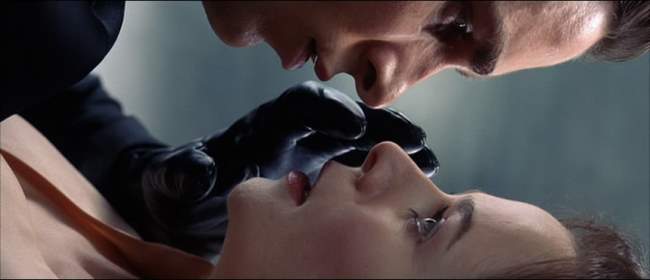
In tracking down Partridge’s lover (Emily Watson), Preston’s world finally crumbles. Now he realizes he has presided over the destruction of humanity, and can no longer continue. Unfortunately, Dupont (Angus Macfadyen), the mouthpiece of the Father and leader of the Clerics has asked Preston to infiltrate the remainder of the resistance in order to crush them once and for all. But Preston is actually approached by the resistance leader, Jürgen (William Fichtner) who has noticed his recent spate of emotion. While Preston is still conflicted, Jürgen tries to enlist Preston in destroying the Father. Even worse, Preston’s ambitious new partner, Brandt (Taye Diggs) strongly suspects Preston of becoming a sense offender.
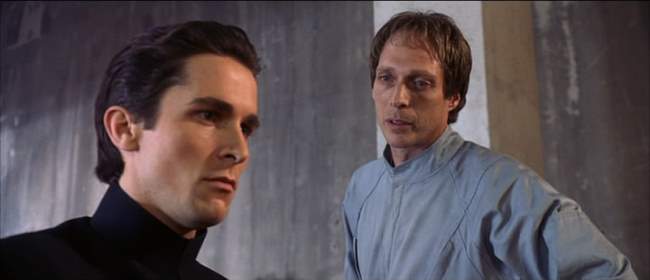
The Acting: The acting in Equilibrium is top notch. For my money, the best performance is turned in by Sean Bean, who, while only on screen for a brief time, really hammers home the essence of the message Equilibrium is conveying. But truly, all the main cast is terrific. Bale does a very good job in going through a conversion in losing his faith, while Fichtner, Macfadyen, Diggs and Watson all really add real believability to a somewhat forced story. Truly, the acting sets Equilibrium above a better than average genre movie to something really worth watching.
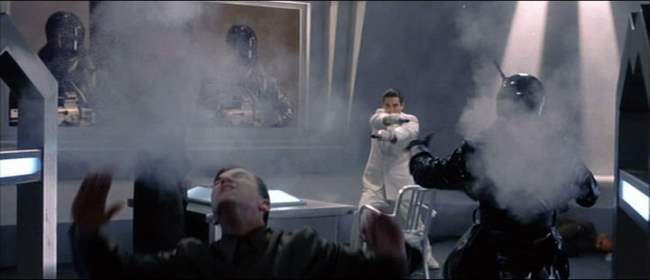
The Action - GunKata: Gunkata is Kurt Wimmer’s newly invented martial art – gun combat in close quarters. The idea is that body positioning and fluid movements, along with an intense understanding of one’s opponents’ most likely actions will allow the Gunkata master – Clerics, in Equilibrium – to be close to unstoppable. Many times in Equilibrium, Preston goes into a room LOADED of bad guys and wipes them all out. Does it look in the least realistic? Not at all, but it does look cool. The action sequences are hectic by design, but are always well planned out and executed. Even if you could care less about the message, if you like gun fighting, Equilibrium is for you!
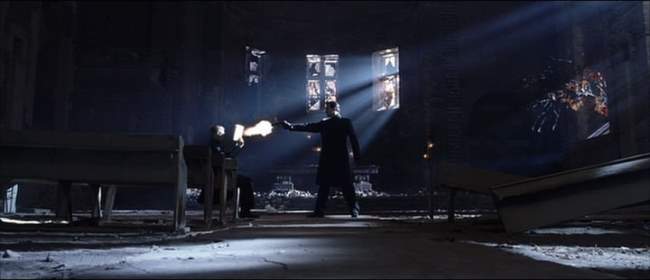
The Visuals: The color of the day for Equilibrium is black, gray and occasionally white. Virtually everything is in black with brief highlights. This makes the instances where other colors are used, such as Preston’s Bruce Lee white outfit near the end of the picture, or the yellow sunset as seeming enormously more significant than they normally would seem. The other dominant theme is squared off architecture. Everything here is comprised of right angles to emphasize the controlled, boxed-in feel of the society. Even worse, the only prominent place that a circle appears is the processing factory, where sense-offenders are burned. Wimmer uses his most excellent set selections to optimal effect. The Cinematography choices always go for high shadows and contrasts, and usually come from interesting angles and contexts. Without trying to resort to high-tech wizardry, the world Wimmer ultimately creates is believable and otherworldly.
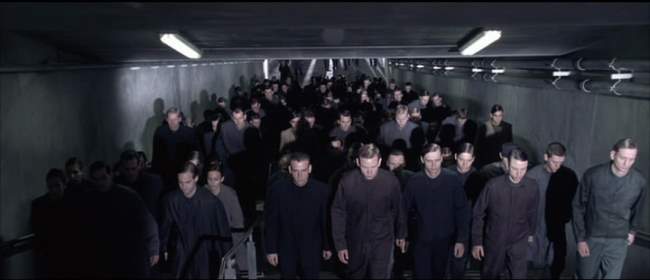
Centralized Control and the Surveillance Society: While the message is often obscured by the slick visuals and action sequences, Equilibrium’s basis is right out of the Metropolis, 1984 model. In looking at a situation where humanity has gone awry, the corrective procedure is one which divorces people from that which makes them human – their emotions. In this model, emotion control leads to thought control, which yields a smooth, functioning society. The warning is clear – if we move down a road that involves giving up our personal freedom, the danger is that we lose our technology. If I were to point out quibbles with this, the idea of the single, evil genius behind all of everything bad lessons the impact. The message conveyed is that society slowly made the choice to go this route – it would have been better to see remnants of that choice still guiding the society versus the simple “glorious leader” bad guy.
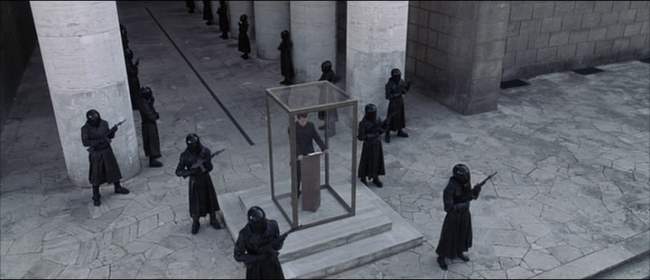
Is There Any Relevance to Today’s World? While only briefly mentioned by Sean Bean’s character, Partridge discusses the “trade off” that humanity made. In exchange for security and stability, they agreed to trade away their freewill. One gets the sense that this was a slow process at first, but which picked up dramatically once centralized control was present. While it’s a far stretch to imagine an emotion blocker being instituted, if we imagine freewill as a sliding scale, its clear that the debate between our personal freedoms and societal security measures are clashing right now. One can only imagine how much greater support the security side would be if in fact a nuclear conflict did break out. Unfortunately, this too is becoming far more likely – in 20 years, we can certainly envision that the number of groups and governments in possession of nuclear material will be far greater than today. The risk isn’t just that a small group of terrorists will use it. Unfortunately, pre-emption of conflict by larger countries could also lead to such a response. In short, as the concern for security and stability are greater, the pressure to impact personal freedoms will grow. If this isn’t a key ingredient for the creation of a cyberpunked world, I don’t know what would be.
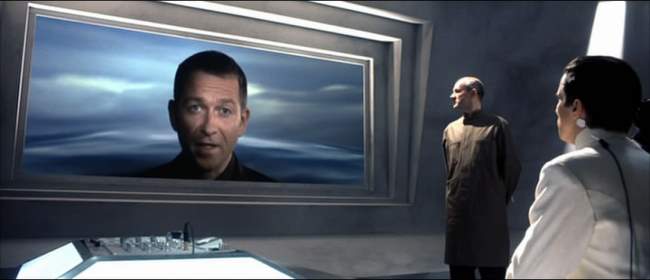
Is Equilibrium Cyberpunk? This is an open question at some level, but I’ve come down on the “yes” side (obviously, as its reviewed here) for three reasons. First, in Equilibrium, centralized control dominates all “above ground” communication, while the horizontal control is the domain of the rebels. We don’t really see any instances of an internet, but we know it exists in some form, based on the rebel leader Jürgen’s comments. The only true downer from a cyberpunk control standpoint is the book used to record contraband – gimme a break, Wimmer! The second reason is the drug, Prozium. The bio-engineered drugs serve as a dominating form of technology that serves to dehumanize society. Until we separate out “Biopunk” movies from Cyberpunk, Equilibrium belongs here. Thirdly, the visuals TRULY fit into a post-Matrix cyberpunk visual style. Without hearing a lick of dialogue, if you only saw the visuals, you might consider sticking Equilibrium into the cyberpunk bucket.
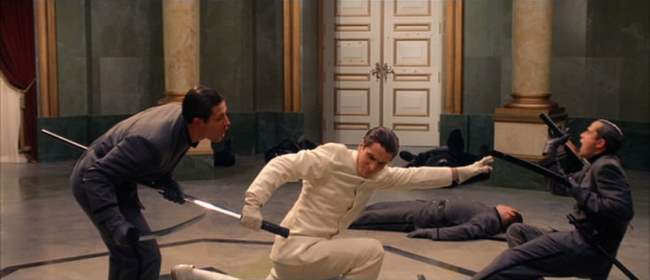
The Bottom Line: Equilibrium makes the most of its 20 million dollar budget. Truly, after watching it, most people are shocked to find out how little was spent on making Equilibrium. From an execution standpoint, everything fits like a sleeck black glove. From the well integrated and motivating score, to the high quality acting, to the even pacing, Equilibrium works to create a very believable mood. On top of this, Equilibrium’s action is hot shit! Wimmer’s creation of GunKata - a new martial arts for close-combat gunfighting is interesting and innovative. However, the story itself is still a stretch, as is the believability of the Gunkata. In the end though, this is really a minor quibble, as the end product is intelligent enough to cause you to ponder while engaging enough to keep you entertained.
~See movies similar to this one~
Movie Review By: SFAM
Year: 2006
Directed by: Laszlo Kovacs, Andrew Hookway (Co-Director)
Written by: Laszlo Kovacs
IMDB Reference
Degree of Cyberpunk Visuals: Low
Correlation to Cyberpunk Themes: Medium
Key Cast Members:
- Sue: Sylvia C. Andreae
- Jazz: Andrew Hookway
- Marshall Pax: Bryan Patrick Stoyle
- Cash: Laszlo Kovacs
- The Nemesis: Justin Monk
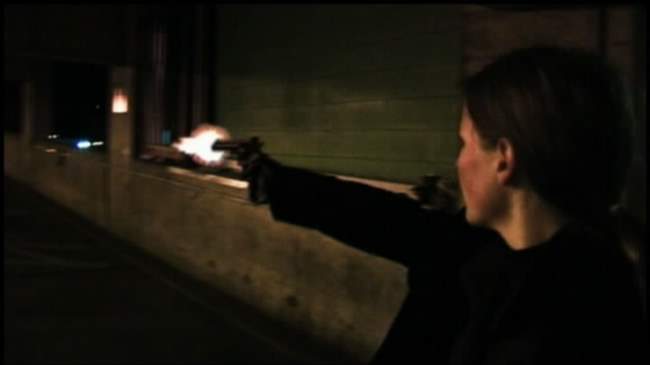
Overview: UCF: Toronto Cybercide is an attempt to create a 70s style police show done up in futuristic cyberpunk. This is a production done by an enterprising group of amateur film makers called Key Pixel: Gathering of Filmers. As a review, this is a slightly different review than many I have done previously, in that I fully realize that this movie is no-budget, and is produced by highly motivated, but amateur film makers. I had previously decided not to give it a star rating, but the more I thought about it, the more it made sense to consider it in many ways as I have the rest. This review will spend more time than most on details of what I thought really worked well, along with what I felt really needed improvement.
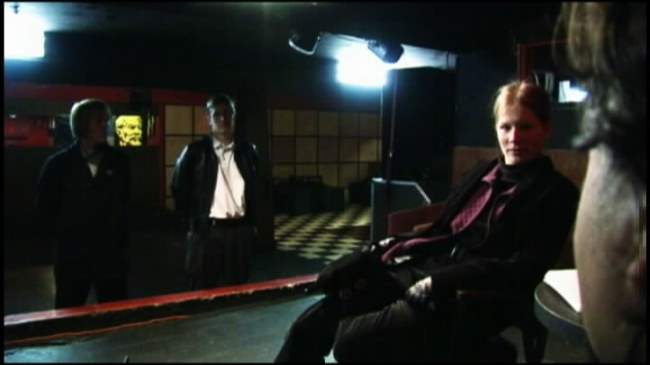
The Story UCF: Toronto Cybercide takes place over 70 years into the future. Some aspects of society have collapsed, but the police are still on the job. A team of detectives, Sue (played by Sylvia C. Andreae), a tough action chick with a cybernetic arm and Jazz (played by Andrew Hookway), an emotive family guy, are sent to investigate some strange cyber deaths, and end up getting involved in a “good cyborg gone bad” story. Here to assist with the investigation is the almost-human Marshall Pax, a cyborg from the Unified Cybernetics Foundation. Together they must root out mafia involvement and stop the Nemesis (played by Justin Monk - and what cool name for an actor!) from randomly killing Toronto’s inhabitants.
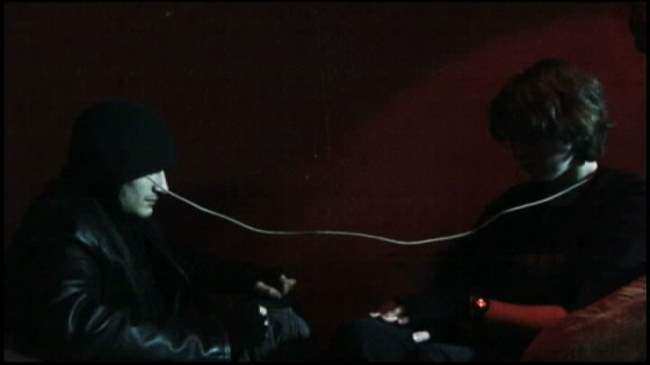
Narrative Issues: The underlying idea for Toronto Cybercide (70s cop show done in cyberpunk) is very interesting in scope, and if executed well, provides enough grist for cyberpunk enthusiasts to sink their teeth into some neat concepts. While some aspects worked well, there were a few key scenes that really could have significantly improved the overall experience.
- The Introduction: While the text was interesting, the way it was implemented made it virtually impossible to get the context. The text wasn’t sequential, and each line started at a different time. This meant that you had to almost go back and rewind for each line to complete and then try to piece it together to figure out what was happening. Even then, we miss out on why the future still has CRT monitors, current model cars, modern phones and 1940s phones together, etc. The luddites are mentioned, but really only in passing.
- Transition leading up to the final battle: The transition leading up to the final battle is virtually nonexistent. There really should have been a scene or two leading up to how and why all three parties came together. All we are given is that a trap has been sprung by the mafia, and that the police magically seem to know where.
- Why don’t we get to see the Nemesis? The bulk of the complexity in character development involves the Nemesis, but unfortunately we rarely get to see this. To the extent he shows up, we get no sense of the internal conflict taking place within the Nemesis. Toronto Cybercide really could have benefited from two scenes (one near the beginning, and one after the kitchen scene) that explored this conflict.
- Why is the Cyborg eating regular food? One of the challenges here was in trying to make the Marshall otherworldly. The kitchen scene gives a good opportunity to show him eating a fabricated food source. Instead, he is eating milk and cake.
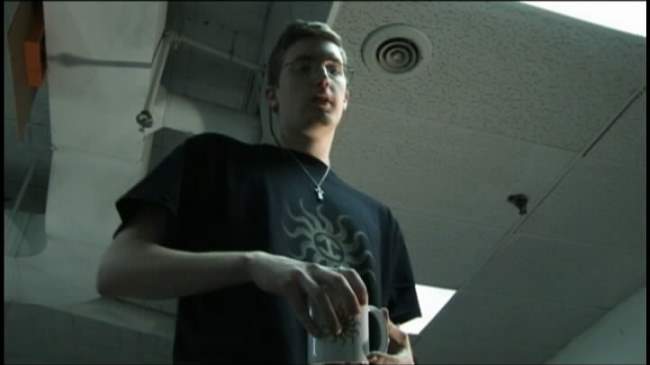
The Cinematography: Kovacs strong point seems to be in constructing some interesting visuals and textures. While many scenes were average, every now and then we’d get a terrific perspective shot, or angle which really added to the context of the scene. Toronto Cybercide is definitely at its best when going for a noir feel. Grays, blacks, overexposed whites and reds worked FAR better than the background soft yellow scenes. And while some scenes were exceptional, others, such as the dust scene sorely detract from the suspension of disbelief. Like the sound, consistency in crafting is definitely advocated.
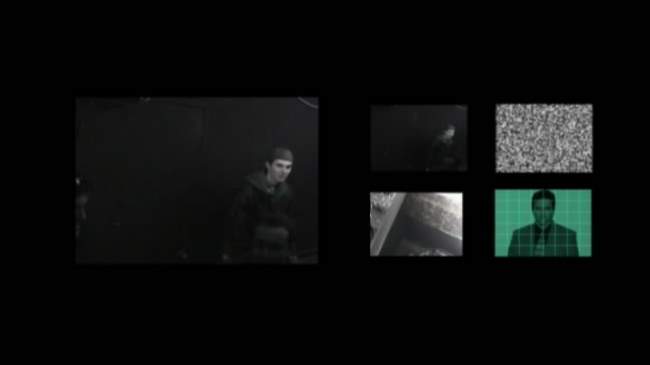
The FX: The FX is very low budget, in sort of a Dr. Who sort of way. For the most part, it works though. The laser gunshots were decent enough, and while the cybernetic arm could have been better, Andreae (Sue) worked it very effectively in the action scenes to the point that it was very believable. Perhaps the coolest one, as was pointed out on the directors commentary was the knife in the book in the Club Red scene – this just worked wonderfully and really helped sell Sue’s strength. Also terrific though was the Luddite TV screen - this more than any other FX scene left a sense of a different time and place.
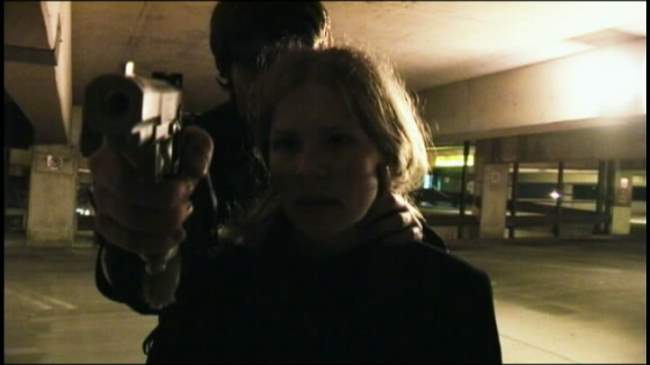
The Editing: For the most part, the visual editing in Toronto Cybercide really works. The pacing is solid, and most all of the investigation and action scenes work. In particular, the early battles and chase scenes really held together well, while the last fight scene came across as a tad too haphazard. The only early shot that really stuck out as wildly problematic was a quick camera jerk near the beginning when the long-haired minion was bitching about following “his part of the deal.” This could have been spliced a bit to become more workable.
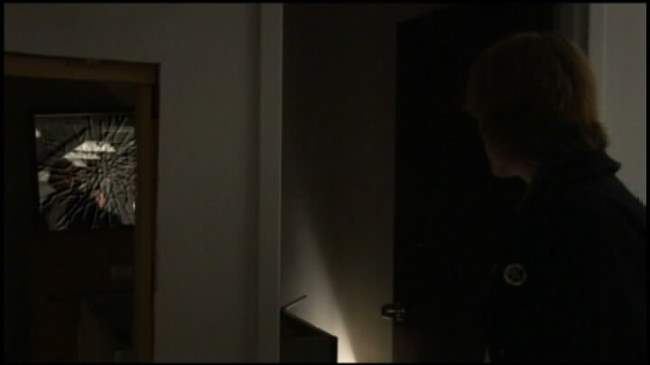
The Acting: The acting in Toronto Cybercide is far from top notch – then again, this is to be expected in an amateur production. As a clear standout, Bryan Patrick Stoyle as Marshall Pax turns in a very credible performance as a stoic, post-human cyborg. More problematic were the two cops, Sylvia Andreae and Andrew Hookway. Part of the issue is they are attempting to be your traditional 15 year, jaded cop types – this was just a hard sell both due to their age, and unfamiliarity with jaded cop stuff. From a narrative perspective, their performance would be greatly aided had it been set up that most cops had already been wiped out, and that these were junior cops thrust into events greater than they were experienced to handle. This would have played far better to their age, character development and overall performance. If there was one change I would make though, it would be eliminating Kovacs’ Matrix Merovingian nod – that scene in the Club Red CLEARLY indicates how good an actor Lambert Wilson in the Matrix sequels really is. Kovacs’ acting works well in most scenes, but that dialogue stretch will get a deservedly horrid groan from all viewers.
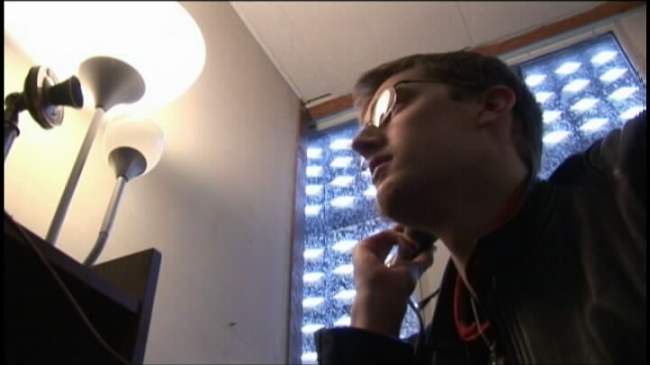
The Music: For the most part, the electronic music accompaniment is one of the best crafted aspects of Toronto Cybercide, and adds well to the mood of many scenes. Simple movement music, such as the background for the train station scene, work wonderfully to pick up the pace. The best use of sound accompaniment was probably the emotive flashbacks that Marshall Pax. The worst was definitely the ending battle. There the music was sort of a slow, ongoing, day to day sound for a scene that needed high tension, fast paced accompaniment.
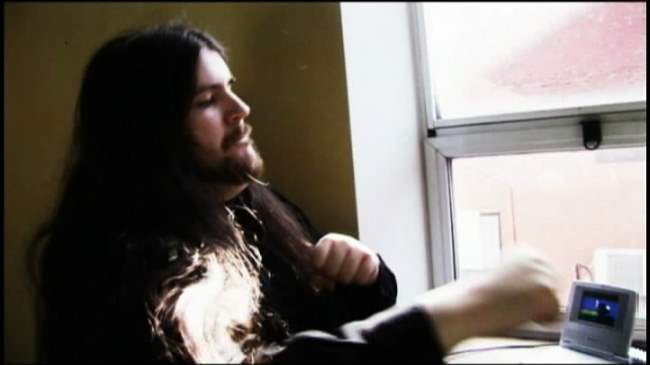
The Sound: The sound in Toronto Cybercide is sometimes great, sometimes horrid. In most scenes, we get either great background sounds or solid transfer’s of action from the left to right speakers, that carefully mimic the movement of those on-screen. These, when combined with the fast-paced electronic background accompaniment really add to the moment. In some scenes, the mix clearly needs LOTS more work – all too often the levels seem to shift dramatically, especially with the inclusion of needless white noise (the kitchen scene is probably the worst instance of this). Far worse though was a scene near the beginning - we even get an ultra-loud, high pitch sound that dominates the speakers for no particular reason – this occurs a time or two later as well. Aside from this though, clearly a lot of work to the sound FX

Best line of the movie - “Not once…did he try to grab my ass.”
Creating a Cyberpunked World Without A Budget: One of the real challenges that Kovacs and company deal with is creating a futuristic cyberpunked world on no budget. I must applaud them for making an attempt such as this, and truly hope to see more efforts such as this. Their challenge is especially problematic in that they are basically stuck with their local surroundings. Kovacs often addresses this by almost attempting to do sort of a staged play approach, where most scenes take place in barren rooms - the audience is left to fill in the details for themselves. He also attempts retrograde technology approaches, such as using 1940s phones for communications. And while some of the scenes work well, there is clearly a lot to be improved. In too many shots, we get close-ups of current year cars, lamps, and a myriad of other current-technology items that suspend disbelief. A better approach might have been to use close-up shots in cars, and so forth so as not to give away the actual “look” of the vehicle used. If they are forced to show these things, there needs to be something in the intro about describing why technology hasn’t advanced (as a counterpoint, Puzzlehead does fairly decent world-building rationales on a very low budget). In truth, the explanation on the movie cover is almost required to get the jist of the world:
In 2078 something had stopped the motor of the world.
Decades later, civilization is still recovering from the global network crash. In this post-dystopian age, remnants of the old technologies remain, including cyborgs and man-machine interfaces. To regulate the disaffected remnants - colloquially known as ‘Burnouts’ - the Unified Cybernetics Foundation is formed to deal with post-human law enforcement.
It is now 2106, one hundred years in the present. When two Toronto police detectives are caught in the middle of a specific multiple murder case involving Burnouts, UCF sends one of their Marshals to assist.
And when the Foundation gets involved, nothing is ever simple.
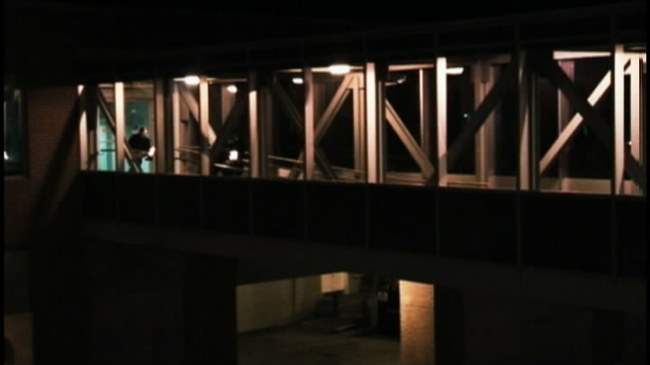
Toronto Cybercide works best in darker, shadow-filled scenes such as the shot above. A Noir look is a useful way of getting around technology shortcomings. More problematic though is the lack of exploration of the dynamics of the world itself. On Kovacs and Hookway’s commentary, they mention the concern in spending too much time on expository scenes. While I agree with the concern, this isn’t the only way the technology impacts on society can be conveyed. Character explorations and build-ins to the scenes themselves provide the grist for world building. Case in point – early in the film, our detectives do the traditional intro talk with the police chief. This would be a great scene for providing insight on how a police station might work differently in a cyberpunked world 100 years from now - instead, we get the chief typing away on a keyboard while staring at a CRT monitor. How about an earpiece, possibly an eye cover, and a VR glove where the police chief is interacting with a large flat screen? We wouldn’t even need to see the flatscreen to get a sense that things are different. If this makes no sense due to degredation in the technology, I’m sure that there could have been some way of conveying difference in surroundings here, without resorting to high-tech FX.
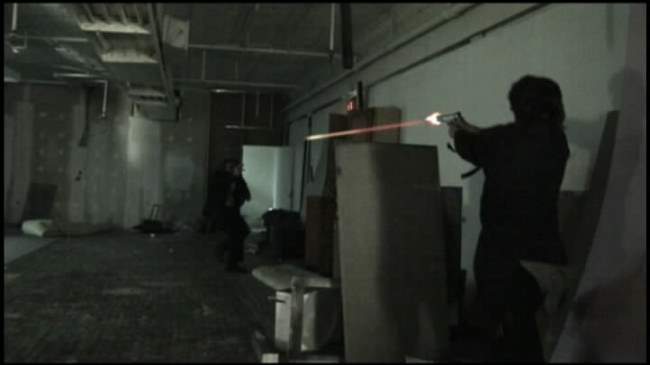
UCF Toronoto Cybercide - When Good Cyborgs Go Bad: The underlying challenge involves a specially trained marshall cyborg (the Nemesis) infected with a signal contagion. This contagion creates a complex dynamic where the Nemesis’ human portion is working hard not to allow the infection to spread, while at the same time, he is no longer in control of his actions. In an environment where we see a continual merging of man and machine, its only a matter of time before issues like this become a concern. The psychological aspect of an augmented person losing a battle over his humanity is definitely something that should require more examination. While not as explored as I much as I would have liked, the idea here is top notch, and definitely separates Toronto Cybercide from the bottom of the barrel cyberpunk flicks which don’t bother with interesting storylines.

The Bottom Line: UCF: Toronto Cybercide provides us an interesting, no-budget cyberpunk flick. I can only imagine the amount of decidation that goes in to a project such as this - in many instances this clearly shows. In some places, such as the “mood” moments, it clearly excels. Every now and then, you find a scene where everything comes together - the sound, visuals and acting have moments of riviting clarity. Some of the cinematography decisions, the pacing, the music and some fun dialogue lines serve to create a fun watching experience. Moreso, the 70s cop cyberpunk idea works. However, there are many areas where significant opportunities for improvement can be realized. If a sequel is enacted, a better explanation of the world is necessary, along with a better way of hiding current technologies. More important though would be a dramatically improved sense of consistency in the sound and visuals crafting. This more than anything else gives would move Key Pixel Productions from amateur status to that of a professional, low budget production house. Regardless, UCF: Toronto Cybercide is still a fun watch, one that I recommend you pick up. Please support this amateur cyberpunk flick and pick up a copy so that we end up with a sequel at some point.
~See movies similar to this one~
Movie Review By: SFAM
Year: 1966
Directed by: Franklin Adreon
Written by: Arthur C. Pierce
IMDB Reference
Degree of Cyberpunk Visuals: Low
Correlation to Cyberpunk Themes: High
Key Cast Members:
Gareth A7: Michael Rennie
Dr. Karen Mason: Karen Steele
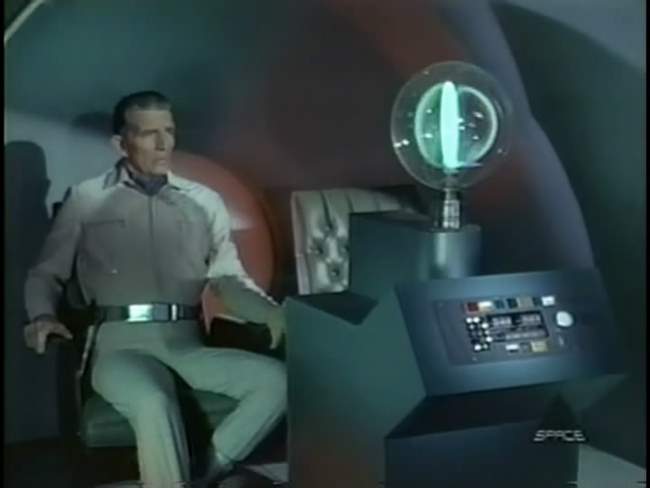
Overview: On its face, Cyborg 2087 sounds like the plot for the terminator: this guy from a dystopic future comes back to the past to stop the development of a new technology with lots of promise, that ends up destroying humanity as we know it; unfortunately, he is chased by these cyborg things who are bent on stopping him. While there are certainly some similarities, the differences are perhaps broader. Aside from the obvious budget differences, the plot in Cyborg 2087 involves a cyborg returning from the future versus a man, and he’s not trying to perform a “retroactive abortion,” he is doing something similar to Sarah Conner in T2 – he wants to stop the technology from being released at that time.
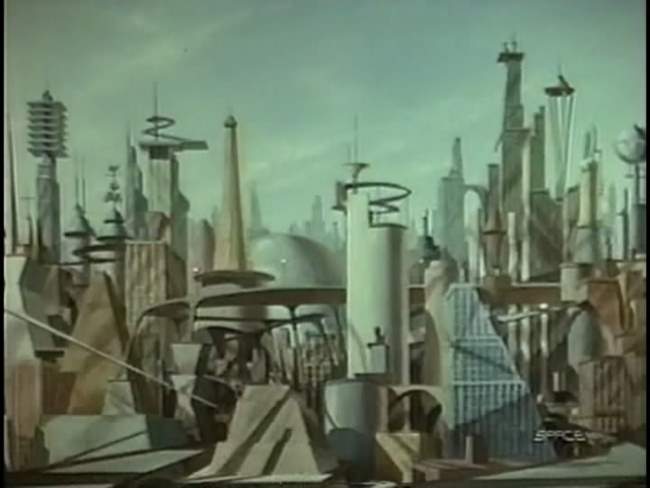
The Story Genius scientist Professor Sigmund Marx has created a technology that allows us to guide other people and influence their thoughts. Unfortunately, it turns out that this technology will be subverted by the government and military to engage in mass thought control of the population. In the future, humanity’s freewill has been crushed. Now a race of cyborgs have taken control to maintain stability. A small group of freedom fighters has come upon a method for restoring humanity. They have created a time machine, and intend to send back a cyborg who has had his “control” chip removed – the goal of which is to convince Professor Marx to abandon his experiment, or in worse case, to kill him.
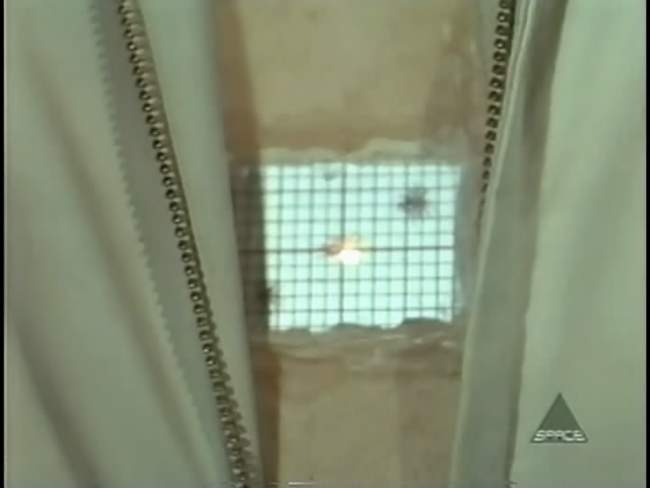
The cyborg, Gareth A7 (played by Michael Rennie of Day the Earth Stood Still), doesn’t have access to all his technology when he was sent back. Worse, he has a homing beacon implanted in him that will lead the killer cyborgs, called tracers, right to him. He happens upon Professor Marx’s assistant, Dr. Sharon Mason (Karen Steele), and uses the perfected form of Marx’s technology to overwhelm her freewill and force her to assist him. From there it’s a race. The bad cyborgs from the future have arrived and are sporting killer ray guns. Gareth and Sharon must find the professor and convince him prior to the killer cyborgs finding him.
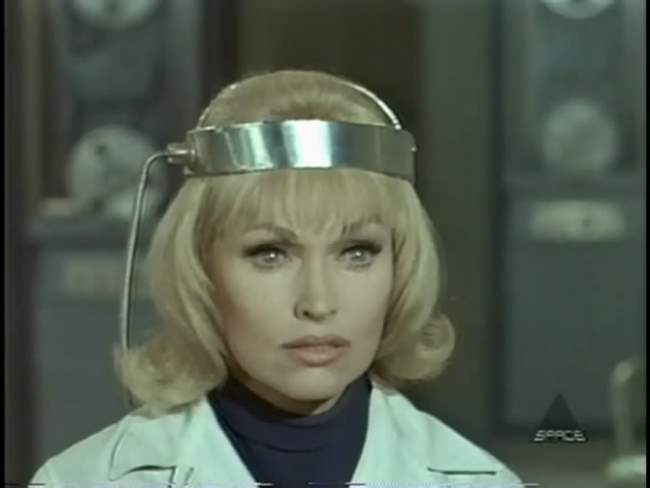
The Acting: The acting in Cyborg 2087 is fairly sub par. Aside from Michael Rennie, who I just enjoy seeing in another flick, the rest of the cast really falls short. Karen Steele over-emotes, as does her secondary love interest, Harey Carey Jr. The tracers are particularly bad, as are most of the bit characters. The Sheriff, played by Wendell Corey, while over the top, is at least well done. The bottom line here, with a budget as low as this one was, the only way Cyborg 2087 could have worked is if the acting paid off – unfortunately it didn’t.
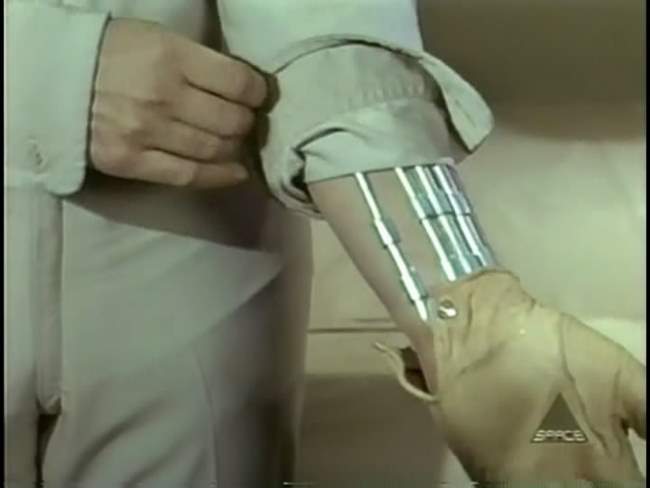
The FX: Cyborg 2087 is very low budget, so we can’t expect much in the way of realistic effects. The extent of fanciness here involves making something disappear by taking another shot with the object removed. The ray guns have the cheesy thick white light look, and the outfits are anything but high tech. The opening shot of the futuristic city, which is nothing more than a painting, is at least interesting from the standpoint that it shows you what people in the sixties thought our futuristic cities would look like. At best, Cyborg 2087 tries for the cyberpunk western look, but this too is problematic. Perhaps the worst part of the FX deals with the tracers, who are heavyset guys running around in fake US army costumes. They really coulda spent at least a buck or two to buy an extra who at least was in shape. On top of this, the cartoonish sounding score is especially atrocious. If there were any quality scenes in this movie, the score ensures that they won’t be noticed.
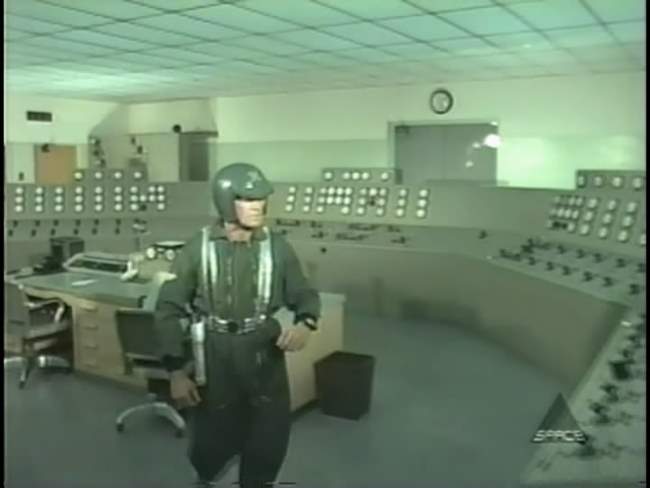
Cyborgs: In Cyborg 2087, we are told that the cyborgs are a combination of man and machine, but we really don’t get much more of a breakdown than that. We know that they have wide open spaces in their bodies, and that they have the power of five or six men. Basically, the model we get here is of regular people that basically work like simple computers, and are able to have various computer chips embedded in them. In the end, its not a very believable view of cyborgs, and isn’t even a consistent one. We are told that cyborgs have no emotion, but somehow, Gareth falls in love with Sharon. The movie would have worked so much better had he let her die near the end versus what did happen (the heroic rescue).
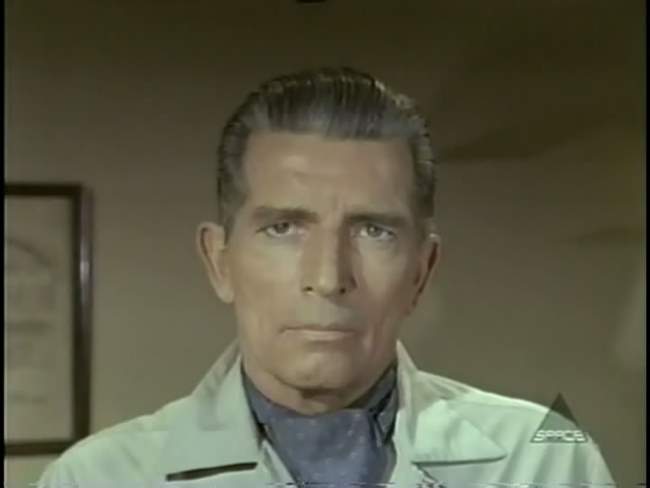
The Bottom Line: Arthur Pierce’s script for Cyborg 2087 probably mostly decent (aside for the Hollywood happy ending factor), but unfortunately Franklin Adreon’s directing talents are not enough to bring it to a successful fruition. Far too frequently, Cyborg 2087 comes across as poorly done SciFi cheese. Again, had the acting been decent, one could easily overlook the low-qual FX. Unfortunately this is not the case. However, I did find it worthwhile to watch for one reason only – I loved Michael Rennie in the Day the Earth Stood Still, and really enjoyed seeing him in another flick. His acting is pretty much the same (Stoic, serious, impending doom looking demeanor), but at least we get to see him running around and performing action scenes.
~See movies similar to this one~
Movie Review By: SFAM
Year: 1987
Directed by: Katsuhito Akiyama, et. al.
Written by: Katsuhito Akiyama, et. al., Toshimichi Suzuki (story)
IMDB Reference
Degree of Cyberpunk Visuals: High
Correlation to Cyberpunk Themes: Medium
Key Cast Members:
Sylia Stingray (voice): Yoshiko Sakakibara
Priscilla S. Asagiri ‘Priss’ (voice): Kinuko Ômori
Linna Yamazaki (voice): Michie Tomizawa
Nene Romanova (voice)Akiko Hiramatsu: Akiko Hiramatsu
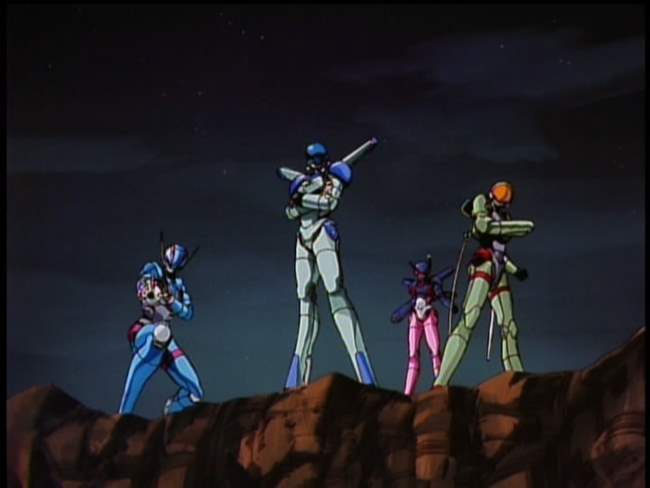
Overview: Bubblegum Crisis (BGC) is one of the all-time classics of cyberpunk animation and anime in general. With a team of hawt chicks kicking butt in cute mecha outfits, while upbeat songs play in the background, Bubblegum Crisis has developed a franchise and staying power that few titles can match. Quite a number of sequels have been created as a testament to this. BGC is influential in a number of ways. Not only has its character animation been widely imitated, BGC was one of the first shows brought over in the US with subtitles. Overall, while there are some dark moments, the original BGC is an action-oriented, mostly light-hearted affair.
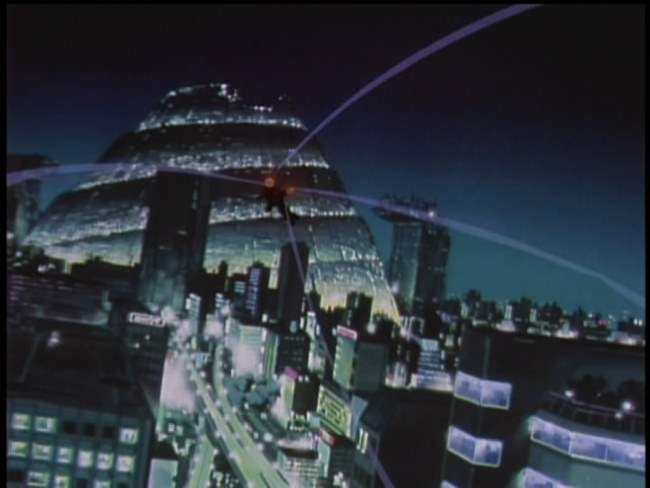
The Story: In 2025 an earthquake destroyed Tokyo. With the assistance of androids and robots created by the omnipresent and ever-powerful Genom corporation called boomers, Tokyo is rebuilt as Mega-Tokyo. Unfortunately, like Bladerunner, sometimes the boomers get out of line, often in fact. Boomers can appear human, but often this is just a fascade for a far more dangerous bio or mecha beast that can break-through the skin. In response to this danger, the authorities have created an under-funded agency called the AD Police, who’s primary mission is to handle boomer incidents. Unfortunately, often the boomers are too strong for the police to handle.
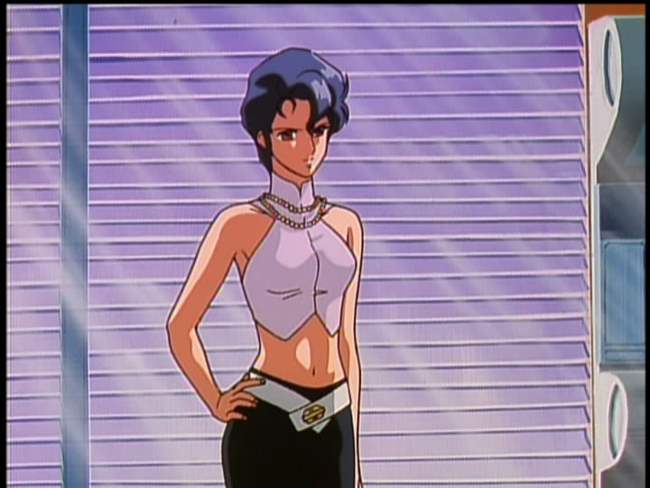
Enter the Knight Sabers. Headed up by Sylia Stingray, the billionaire daughter of the former Genom Corporation scientist who invented boomers, Sylia has advanced the research on her father’s mecha hard suits, and has recruited a team of three other hawt action chicks who, along with Sylia, comprise the Knight Sabers. All of them have secret identities. Priss is a pop singer, Nene is a hacker who works as a dispatcher at AD Police HQ, and Linna is an aerobics instructor. But all four of them have trained to become mercenaries extraordinaire in defense of boomer incidents.
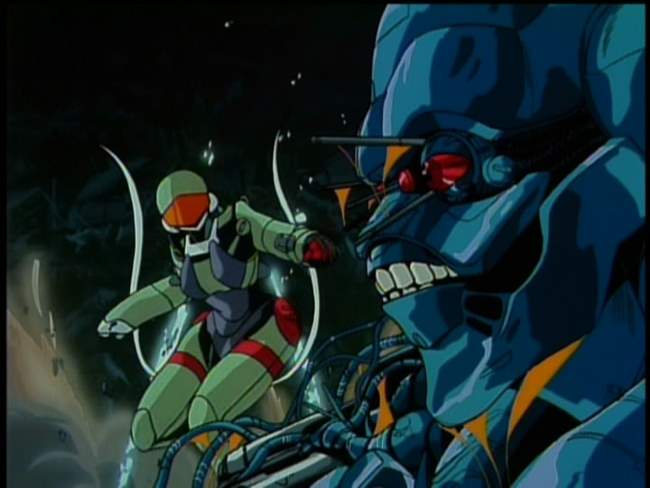
Unlike most OAVs, BGC is designed with each episode being as self-contained story. While many of the stories string together, there are no cliffhangers here. Some of the episodes have at least a modicum of intrigue, but generally, when it gets right down to it, the goal is for the knight riders to kick some boomer ass. Action dominates, which works considering the relatively short time allotted to each story (up to 50 minutes). As the series continues, most of the storylines deal with the Kight Sabers foiling attempts by the Genom corporation to secure even more power. A few of the episodes have complex storylines, but the majority are straightforward, with evil genius types (boomer or human) directing boomer machines who create death and destruction.
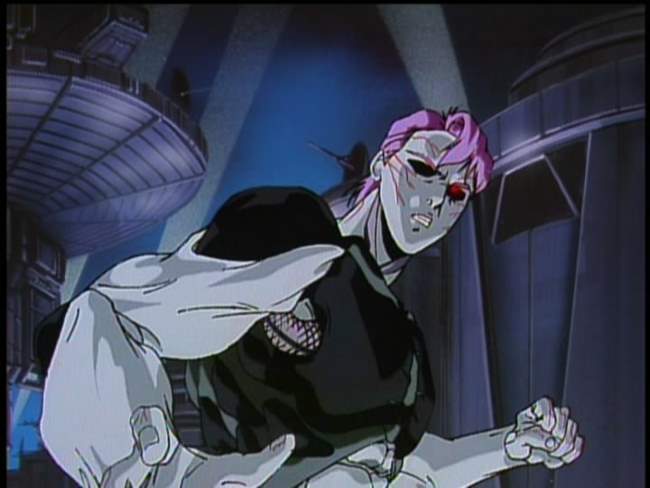
For me, my favorite episode is Episode #5, where a two unique bio-based sexroid boomers who need blood for sustenance escape from escape Genaros, the SDPC’s orbital supply station for humanity’s moonbases, and make their way to Mega-Tokyo. The episode is far more complex than most, and touches on similar issues to Blade Runner, in that these Boomers just want to be free to live. Most of the boomers in BGC (other than the major villains) don’t really exhibit any form of sentience, but the ones in this episode (and the continuation in #6) are sentient and multidimensional.
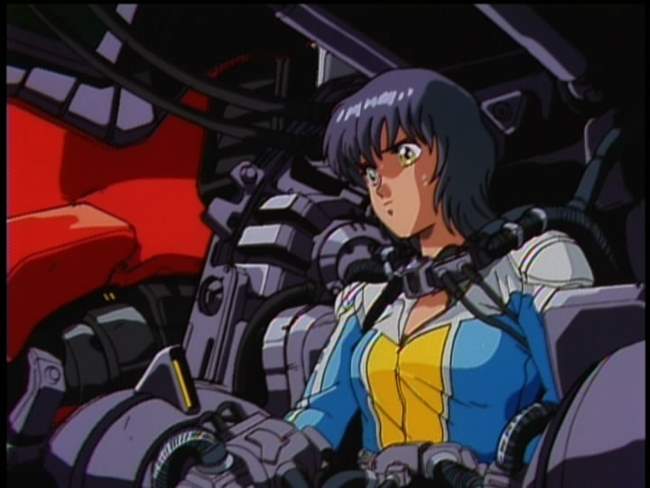
Influential Visuals: Along with Akira, BGC animation has been very influential in transforming anime to the popular style we see today. Characters with overly large eyes and the familiar facial styles are on display in BGC, as are a bevy of experimental looks and styles. The look of anime changed dramatically from the late 80s to the early nineties – BGC will always hold a place in history due to its influence on this change.
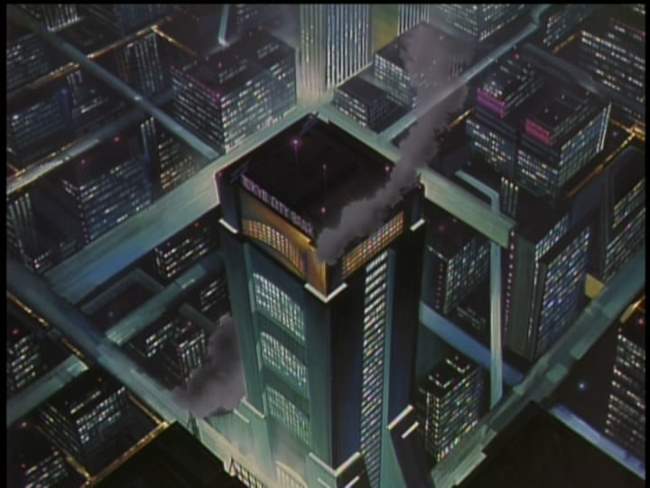
Mega-Tokyo: BGC took the Blade Runner city visuals and applied them to anime, which was then imitated by most of the shows that followed. The cityscapes are modern looking with a blue background, with various green and red highlights. Grays and blues are shown in abundance, with occasional orange and red daytime scenes. Most of the shots are from above, focusing on the overall city-scape, but there are a number of ultra-modern buildings including the Genom’s Tower (which looks like the Blade Runner Terrel Corporation building) and the AD Police building – same as Blade Runner as well.
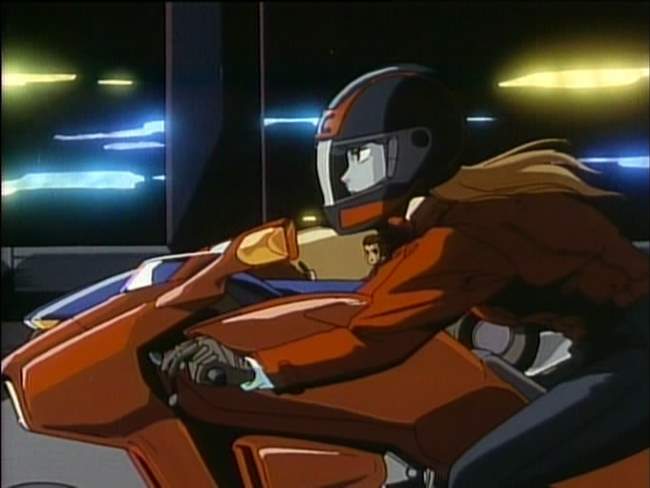
The Action: By far the best quality animation BGC brings is in their action sequences. While the rest of the series is really not very special, the action sequences are very well done. We get a variety of effects and perspectives that driving the relatively quick-pacing. In many of the scenes, the backgrounds show a variety of methods to enhance the speed and action. Often BGC engages in mecha-style battles (many of the bad-guy boomers are variations on mecha characters), but these are different from some in that the Kight Sabers are in nimble, tight-fitting suits, which increases the speed of the action.

The Music: Very few OVAs have music as recognizable as BCG. BGC is known for being one of the first (or at least one of the most recognized) to essentially embed music videos into their action sequences. The songs play a big part in Bubblegum Crises, with a large number of the action sequences and dramatic moments overlaid with song accompaniment. Almost twenty years later, this innovation has blossomed and morphed into what we see with FLCL for instance, where entire sequences are purely videos intertwined with the story.
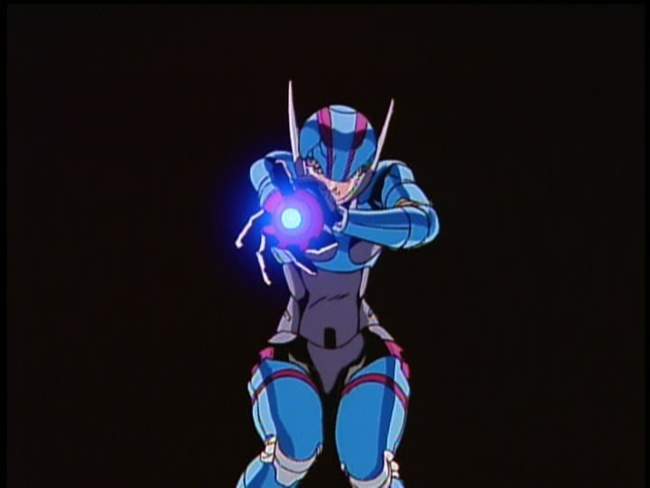
The Bottom Line : While I’m generally not too excited about mecha anime (this is purely a preference on my part, and not a knock on mecha), I find BGC quite enjoyable. BGC is more like an earlier version of GITS SAC in that the focus is action first, and philosophy second. While a few episodes do explore what it means to be human, in all but a few cases, this is usually done in the context of a fairly light plot and intense action. Perhaps the philosophical aspects would have been highlighted had the series continued, but for legal reasons, BGC was cut short at only eight episodes. On pure enjoyment I’d probably rate the series a 7 out of 10, but due to its significant influence on anime and cyberpunk I’m giving it an extra star.
Page 2: More Screencaps —>
~See movies similar to this one~
Movie Review By: SFAM
Year: 1962
Directed by: Wesley Barry
Written by: Jay Simms
IMDB Reference
Degree of Cyberpunk Visuals: Low
Correlation to Cyberpunk Themes: Very High
Key Cast Members:
Capt. Kenneth Cragis: Don Megowan
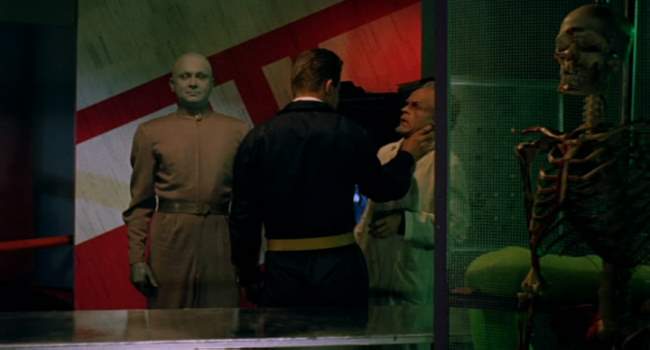
Overview: It’s a rare instance when we find a movie that has all the trappings of a “B” SciFi shlock-fest – one with an overly cheesy name, a DVD cover advertising the movie as a classic drive-in flick (as was the original marketing art), one which has the standard “B” movie high-pitched moaning female chanting alien vocal track duing the credits and a creature-feature font typeface for its title – but in fact isn’t. Creature of the Humanoids practically screams “low-budget, exploitative SciFi crapfest” but…isn’t. Instead, after digging beneath the voluminous trappings of “B” cinema, we find a very intelligent, but low-budget movie – one which in 1962 has captured a good number of the cyberpunk themes that would dominate literature and movies twenty years later. Contrary to the DVD cover, which combines Creation of the Humans with War Between the Planets (which is pretty much what you think it is), this is a slow-paced, thinking person’s movie. Said another way, I’d probably be damn bugged if I had taken a date to see this at a drive-in, but as an intelligent movie for CyberpunkReview, it works fine.
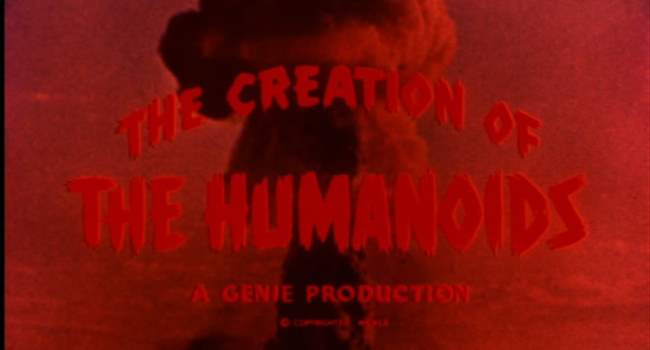
The Setting: A nuclear war has taken place, resulting in the extermination of 92% of the human race. Those that remain are riddled with radiation poisoning, leaving very few couples who can create viable offspring. To keep civilization running, the remaining humans significantly ramped up their production of robots, which now number almost a billion in total, and handle most of the mundane tasks of society. Over time, advances in AI and automation have created a “race” of robots that have become sentient, and even more capable than their human counterparts. Because humans couldn’t stand working next to machine-looking things that seemed smarter than them, robots began being constructed to emulate humans. Now, 20% of all robots look humanoid in nature. However a backlash has formed - a hate group called the “Order of Flash and Blood” is pushing for the ban on all humanoid-looking robots. Because of a backlash by many humans, these robots can only look 70% similar to humans.
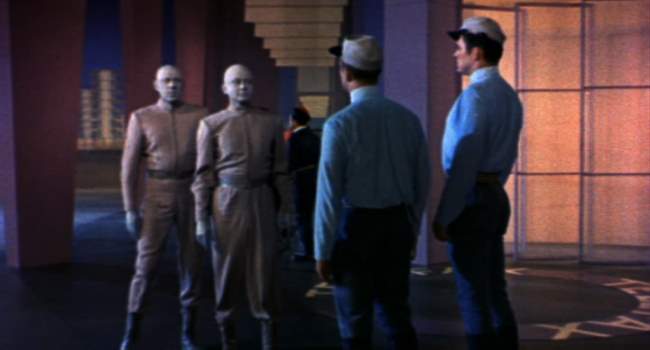
The Story: Capt. Kenneth Cragis (Don Megowan) is a leader in the Order of Flesh and Blood, the robot hate group. While on monitoring the activity of “clickers,” a derogatory term for robots, he notices some suspicious activity entering the robot shrine, a building off-limits to humans, which contains the central AI program that most robots now take direction from, and practically worship. In getting Flesh and Blood members to storm the shrine, they find a robot that looks almost fully human (96%) who has just killed a rogue scientist. As robots are all programmed to follow what essentially are Asimov’s three laws of robotics, this constitutes the first instance of a robot killing a human. Cragis sees this as an opportunity for the order to finally break-through and convince the human leadership of the righteousness of their cause. But in analyzing the human-looking robot, they discover something horrifying – it turns out that this robot actually “thought” he was a person, and appeared to have been created by taking the essence of a person recently dead, and replicating them inside of a robot.
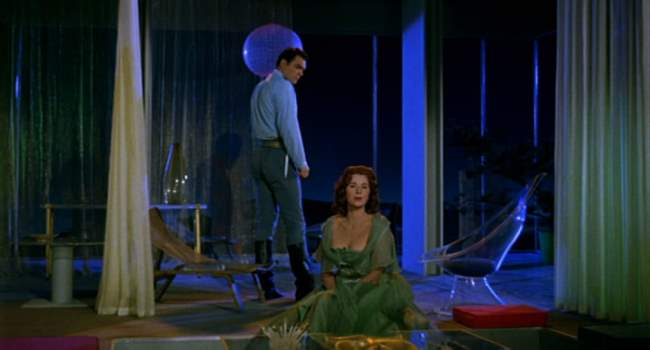
Cragis also has another dilemma, his position in the order is now threatened, as its come to light that his sister has recently entered “rapport” with a robot named Pax. When in rapport, the robot and human essentially share the same mindset – everything his sister desires is instantly understood by the Pax and her needs are met. They are essentially soul mates. Cragis and his sister are on complete opposite sides of this issue, and there is no way for him to convince her otherwise. But things go from worse to weird when Cragis, and his newly found love (Erica Elliott) discover a truth about themselves that will shake the foundations of humanity.
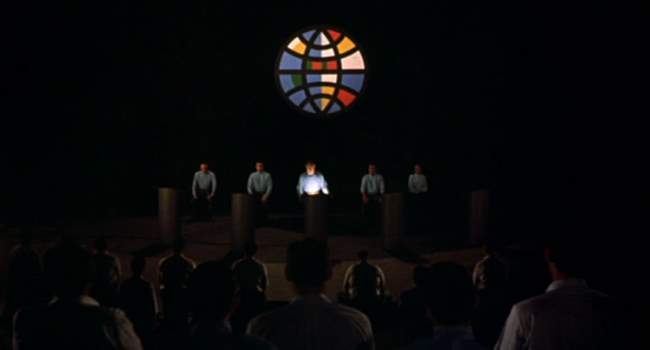
The Production Values Suck: If I were grading Creation of the Humanoids based on production values alone it would be grateful to achieve even a three-star rating. From a production value standpoint, this movie is poorly made. The very few sets that exist look like warehouse sets quickly done up with extra junk from other SciFi movies and the only music accompaniment used everywhere (including love scenes) is the eerie “alien ship is coming” sound. The FX, especially of the robots are very poor, consisting primarily of bald-hair pieces and green makeup. Aside for a few of the leads (Don Megowan, the most important character is decent) is sub par at best. From a production value standpoint, Creation of the Humanoids seems far better suited to a play than a movie. If fact, I wouldn’t be at all surprised if this was the original intention of Jay Simms’ script. The DVD treatment, which provides a far better than expected transfer, essentially tries to mimic a drive-in movie experience. This is annoying it that there is no chapter feature. You are forced to click through the upfront stuff, the first feature, and the intermission crap to even get to Creature of the Humanoids.
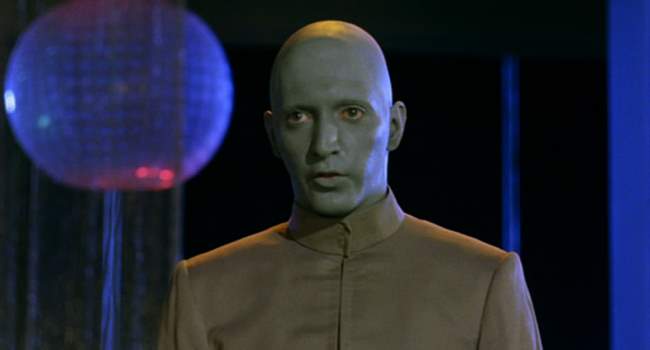
If a Man Loses His Leg, Is His Soul Affected? this is the question posed by Creation of the Humanoids. If one answers that the soul is not affected, the follow-on thought is what if the whole body was replaced but that the essence that is “you” survives in an android shell. Do you still have a soul? If not, when did you lose it? Creation of the Humanoids provides us a world where humans are quickly becoming extinct, and where their salvation is going to be a situation where their personalities – all that makes them unique – are transferred into robotic bodies. They even will still be able to procreate, after a fashion. So the larger question this movie finally poses is: in this completely post-human world, does humanity still exist?
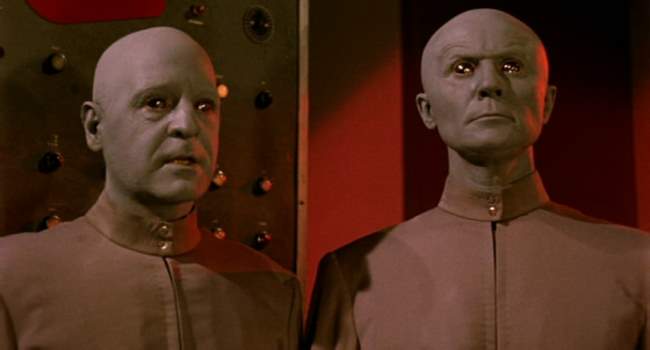
Replicants in Years Past: While Blade Runner is most often credited as having the definitive replicants, clearly this idea has been around for a lot longer. In Creation of the Humanoids, robots that are 96% human capability are created by taking a recently diseased person (within six hours of death) and extracting all that is unique about them (their memories, learning, skills, philosophy, etc.) and inserting it into a special thalamus chip to be integrated into a robot’s cerebral cortex processing unit. In doing so, they wipe all memory of the human’s last moments (their deaths). The end result are robots that still think they are human. For all times other than between 4:00 – 5:00 am, the robots act completely human. But during that one hour, they remember who they really are and report back to the robot society.
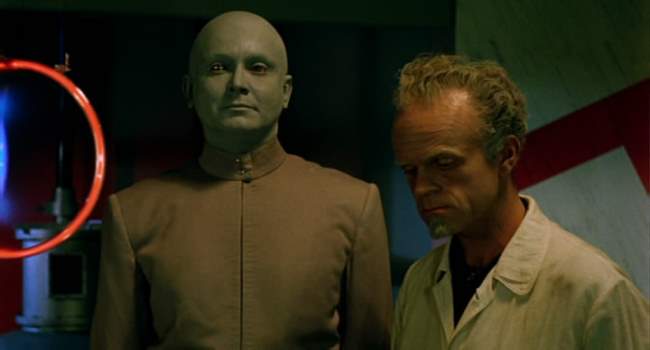
Asimov’s Laws Were Already Being Followed By 1962: Creation of the Humanoids gives us a glimpse of the incredible influence that Asimov’s “I, Robot” a mere 12 years later. The Robots in this already adhere to the laws, and have already worked out methods to break them. Robots must never harm other humans, and must always work to serve their best interests. Yet, unfortunately, humans don’t always know what is in their best interests, and thus, the robots must become subversive to meet this law.
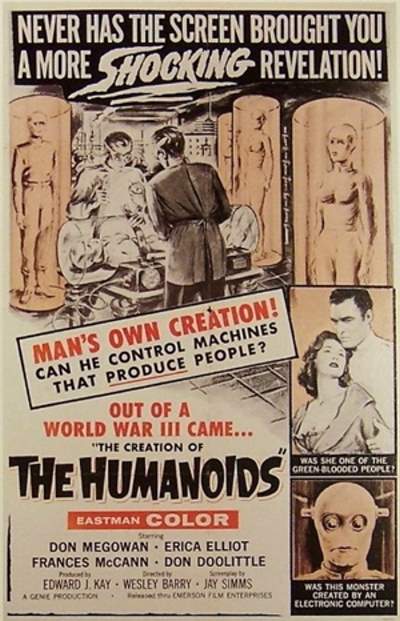
Clearly, this movie was created and marketed as a creature-feature. One can only imagine the disgust that writer Jay Simms had to this bastardization of his overly thoughtful script.
When Robots Control Humanity: One of the more interesting arguments Creation of the Humanoids engages in is the question of what life will be like if and when the robots control mankind. In this movie, the robots have already gained control of who is in gets elected, even though the regular populace has no clue this has occurred. The robots also engage in subtle methods of mind control and brainwashing, all to make the populace more accepting of robot rule. Because the robots believe humans do things not in their best interests, it becomes their duty to “manage” human life. The question is then raised whether humanity will still want to pursue knowledge and self-betterment – after all, what’s the point if everything you even think you might want is automatically provided for you? The answer is rather depressing here – it has already happened – that we’ve just now realized it is almost irrelevant.
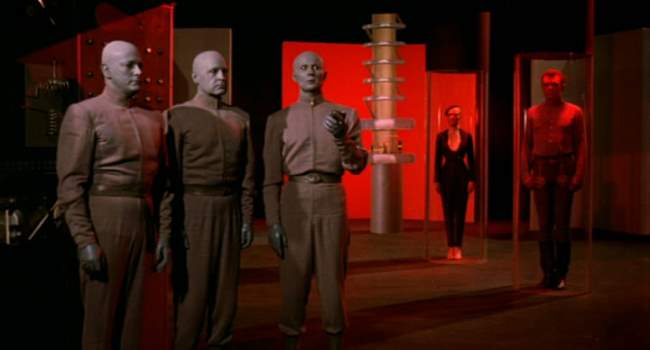
The Bottom Line: While the production values suck, the story in Creation of Humanoids is both complex and interesting. Many ideas presented are wonderful grist for later books and movies. As long as you realize that the production values in this flick make the old Dr. Who series look high-tech, you’ll probably enjoy it. While it is very slow-paced and only has about 5 separate scenes, the ideas presented are interesting enough to keep your attention. Aside for the commentary on race relations (obviously a big issue in the early 60s) Creature of the Humanoids makes us think through some interesting notions of post-humanity. While I’d give it 3 stars for its production values, I’d give it an 8 star rating for its story. This won’t appeal to everyone, but is certainly good enough that it shouldn’t be forgotten.
~See movies similar to this one~
Movie Review By: SFAM
Year: 1995
Directed by: Stephen Norrington
Written by: Stephen Norrington
IMDB Reference
Degree of Cyberpunk Visuals: Medium
Correlation to Cyberpunk Themes: Low
Key Cast Members:
Jack Dante: Brad Dourif
Hayden Cale: Ely Pouget
Sam Raimi: John Sharian
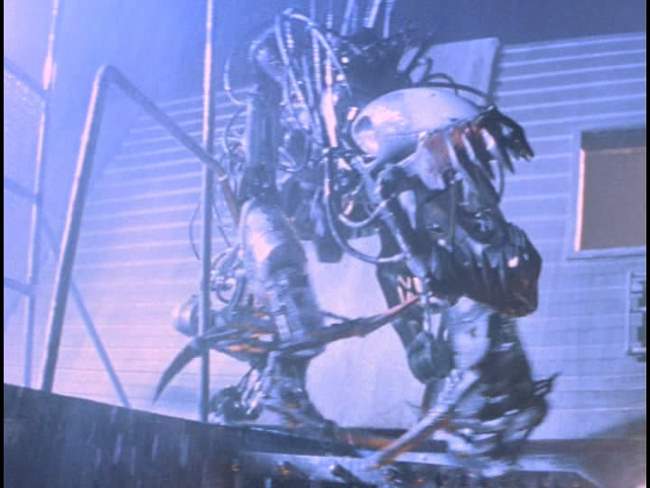
Overview: In yet another of the Alien/Terminator copycat movies, Death Machine is a low-budget, poorly thought out shlock-fest that tries to dazzle you with a largely incoherent in-depth plot and over-the-top acting. While another virtually unknown British Director, Richard Stanley, scored big in a similar but far more original copy-cat movie, Hardware, Stephen Norrington’s Death Match just doesn’t cut it. These types of movies live or die on the overall atmosphere and the quality of the fear the creature engenders. While Hardware excelled on both counts, Death Machine falls woefully short. Worse, Death Machine makes a lame attempt at humour by naming all the bit players with the names from the movies Norrington stole plot bits and visuals from (John Carpenter, Scott Ridley, Weyland, and Yutani)
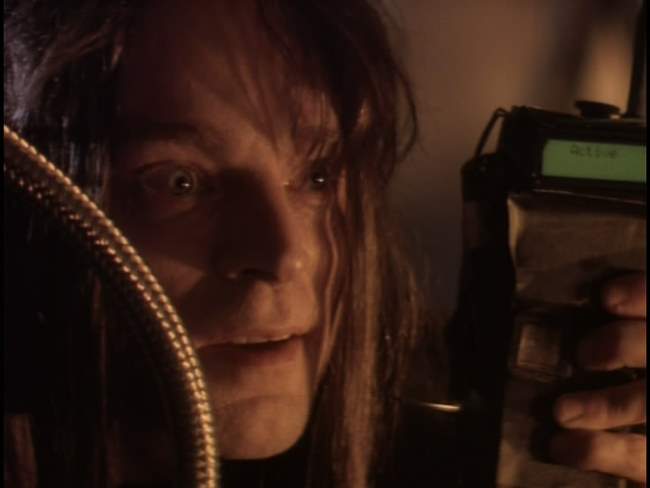
The Story: In the near-future, the evil Chaank Armaments corporation has engaged in a number of shady, classified project that have resulted in dissapearances and potential deaths. Public outcry has gotten out of hand, so for damage control, they bring in an upstanding principled new chief executive named Hayden Cole (Ely Pouget), a hot chick with a porn past to inspire trust and confidence amongst the masses. As she delves into things, it’s clear that the board of directors wants nothing to do with providing full disclosure. Why? Because there is an evil genius mad scientist in the basement named Jack (Brad Dourif), who has the dirt on everyone, and is hard at work at making a death machine to keep everyone in line. Additionally, Jack has created a process for transforming humans into killer-cyborgs. Unfortunately, this process is flawed, and all the cyborgs end up dying.
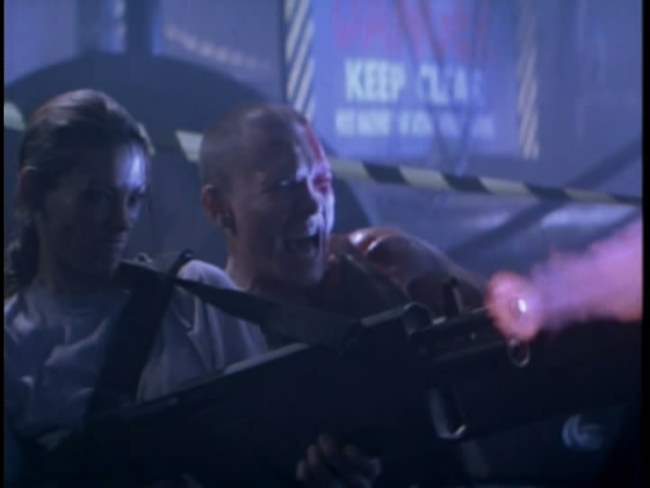
Eventually, the hawt chief executive challenges Jack, and all hell breaks loose. She and a few others become trapped in the building with some would-be amateur freedom fighter cyberpunk types who have invaded the corporation in the hopes of destroying it. Now they are all just trying to escape the robot known as the War Beast. Hayden and Sam Raimi (John Sharian), the leader of the amateur terrorists, spend the rest of the movie trying to evade and eventually kill the War Beast. I could go into more of the plot, but truly, its just not worth it.
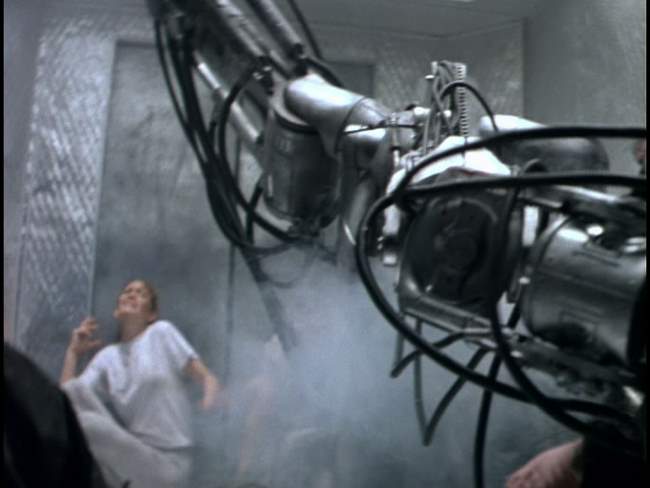
The Robot Monster: OK, so we have this really tough robot thing – virtually indestructible. Anyone wanna tell me why this robot has like a hundred rubber tubs hanging out, and nobody who fights it in hand-to-hand combat thinks of grabbing them? More to the point, why don’t the thousands of rounds of bullets affect the tubes? Bottom line, this robot was more silly than scary. In Hardware, the robot was continually shown moving quickly in low-light situations. This allowed Stanley to get away with a low-tech, but very believable robot. Unfortunately, Death Machine doesn’t take this approach – it shows the robot in detail to make sure you see its faults. Color me not impressed.
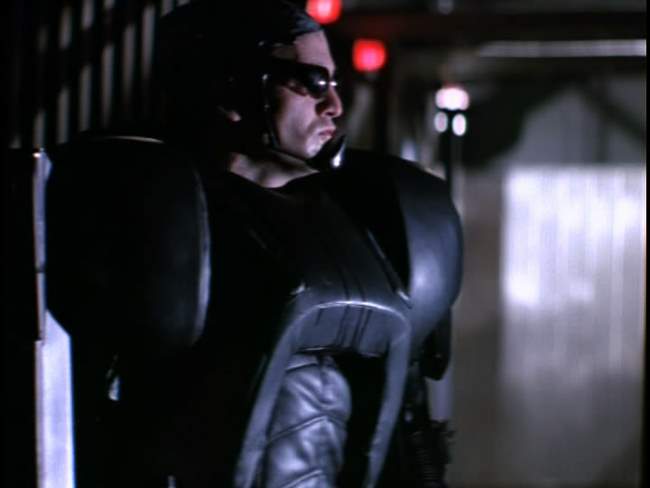
Yes, ladies and gentlemen, you can tell this is a cyborg because he’s wearing sunglasses. Also, he has that really big vinyl and plastic whatever-the-fuck-it-is on - DEFINITELY a sure sign of a cyborg warrior!
Death Machine’s Approach to Cyborgs: In Death Machine, the Chaank Armaments Corporation creates cyborgs by wiping someone’s memory and uploading it with detailed weapon systems training, and simple goals (e.g., protect me, seek out and kill “guy X”). In short, its approach to cyborgs assumes the human mind is synonymous with a hard disk. They even have an instance where a key character’s personality “backed-up” and then wiped from his mind to allow the “warrior personality” to be installed, and then later, they reload the initial personality. Puleeze, Norrington! I’m sure you coulda come up with a marginally believable cyborg warrior rationale. Too bad you didn’t take the time to think of one.
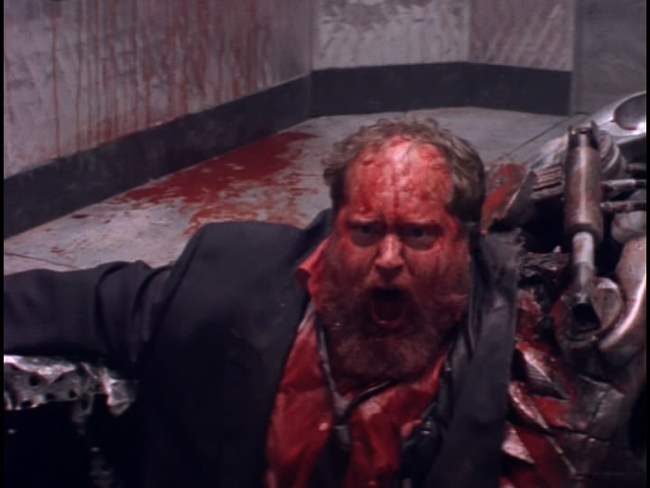
The Bottom Line: Truly, to even have a chance of being watchable, Death Machine would have needed to incorporate a heavy dose of T&A. While Ely Pouget has the looks, this never materializes. This is all the more annoying in that the inclusion of the porn reference flat out portends juicy T&A. Instead, we’re left with a shlock “B” movie, absent of T&A, without the effects, acting, plot or monster to carry the day. Brad Dourif’s character, while mildly amusing is just too over-the-top to stomach, and nobody else other than Pouget even stands out. Even worse, they screw up what should have been a very simple ending (this may be the only original part of the movie - in retrospect, Norrington should have copied this as well), leaving us with a almost complete let down, and no payoff for sticking around for 2 hours. In short, I don’t see much to recommend here.
~See movies similar to this one~
Movie Review By: SFAM
Year: 2003
Directed by: Andy & Larry Wachowski
Written by: Andy & Larry Wachowski
IMDB Reference
Degree of Cyberpunk Visuals: Very High
Correlation to Cyberpunk Themes: Very High
Key Cast Members:
Neo: Keanu Reeves
Trinity: Carrie-Anne Moss
Morpheus: Laurence Fishburne
Mr. Smith: Hugo Weaving
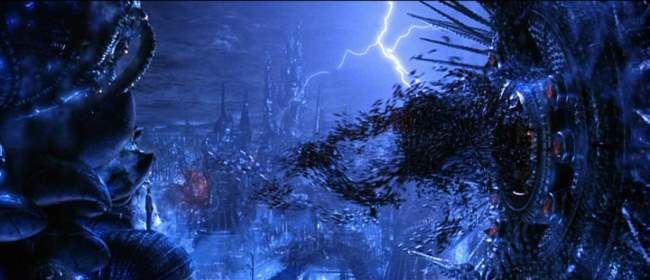
Overview: Yes, the majority of the population was disappointed with Matrix Revolutions. Many voiced issues with various movie aspects such as dialogue and acting. More still complained that the overall story was non-sensical, with many points seemly completely incoherent. Some even commented that even though it was incoherent, they absolutely loved the action sequences. Personally, I found an altogether different movie. At times I almost felt Matrix Revolutions was purposely written for someone exactly like me. My background in cybernetics seemed wonderfully tailored to understanding the trilogy from a science fiction perspective (versus the philosophical perspective that is most often explored) – as rarely do I find a symbolic struggle of positive and negative feedback systems so overtly played out in film. Strangely enough, many others tend to have this same sentiment (that the movie was MADE for them), although their backgrounds are very different from mine. In this sense, for those that LOVED Matrix Revolutions, something about the movie just “clicked” for them – in most cases, that special something was different for each person. While yes, the action is astounding, as are the visuals, its this aspect of Matrix Revolutions which is most intriguing to me. It may not be for everyone, but for those that like it, its almost tailor made.
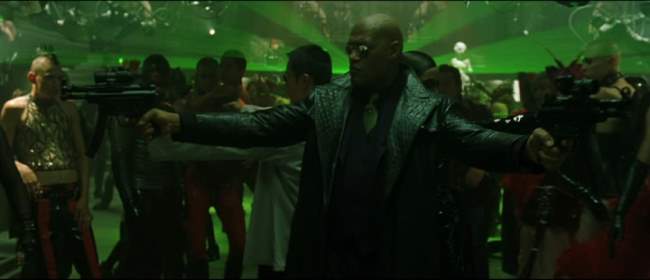
The Story: Matrix Revolutions is the third installment of the Matrix Trilogy, where Neo’s decision at the end of Reloaded causes a final confrontation between Zion and the Machines. In rejecting the Architect’s control system, Neo has thrown the relationship between humanity and the machines in a completely unpredictable direction. The machines are quickly digging to reach the last human city of Zion, while Neo, Morpheus, Trinity and a host of others look to recover from their last ditch attempt meeting with the Architect at the end of Reloaded.
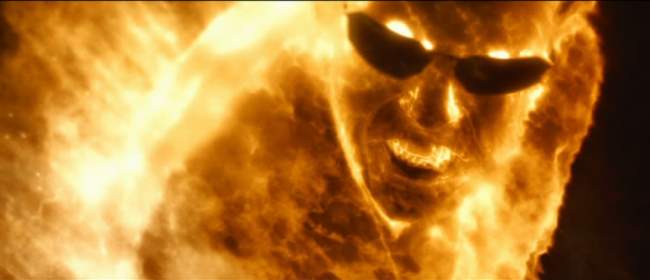
Nothing was at it seemed. The history of the one was a lie, all part of an elaborate control system. Now, in less than twenty hours, the machines will penetrate Zion’s defenses, and potentially destroy humanity forever. Worse, Neo’s mind has somehow separated from his body and now lies comatose next to Bane on-board the Ship called the Hammer. Morpheus is still despondent about the false prophecy, and the Zion’s defenses have been all but wiped out by a premature EMP pulse.
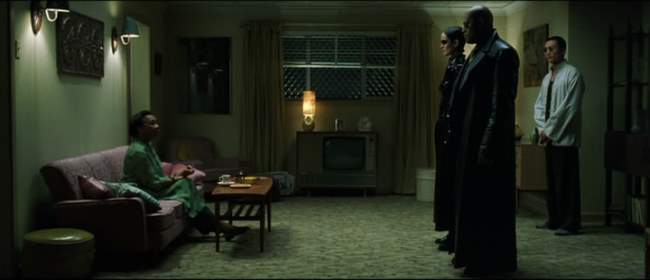
It turns out that Neo’s mind has been trapped in a place in-between the Matrix and the Machine City, inside something called the Mobile Avenue Train Station (better known as limbo, which is an anagram for “Mobile” Avenue). Unfortunately, this is controlled by the Merovingian. Trinity and Morpheus, along with Seraph must now convince the Merovingian to let Neo Free. Meanwhile, Mr. Smith has virtually taken over the Matrix with duplicates of himself while Zion prepares for the attack of the Machines, and decide to place virtually all their resources into holding the dock. As things become clear, Neo decides the only way he can save Zion is to personally go to the virtually impenetrable Machine City. Meanwhile, as the Dock Fight goes from bad to worse, Niaobi (Jada Pinkett Smith), Morpheus and company race back in the Hammer to help save Zion with the humanity’s last remaining EMP.
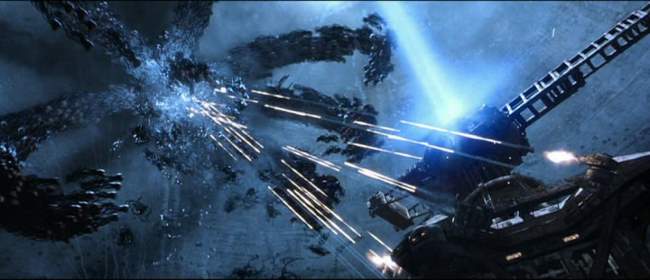
Revolutions is a War Movie: Whereas the first movie, the Matrix involved a personal awakening, and Matrix Reloaded was almost more of a chase movie, Matrix Revolutions is more a war movie than anything else. In this sense, each of the three movies are very different from one another. Many new characters are introduced in Revolutions, while some of the staples of the first two movies take more of a back seat. We see less of Morpheus here, for instance, but are almost bombarded with a myriad of secondary characters, each intended to bring us a sense of drama associated with the enormity of their undertaking. While one can discuss how well each of the minor characters worked, the need for their inclusion is rather clear – without them, the scale of the conflict doesn’t really work.
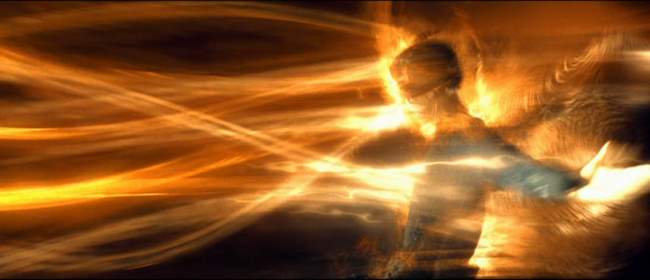
The Matrix Trilogy as a Participative Movie Watching Experience: Most movies are meant to be conveyed in a rather passive manner – one which may require the view to actively pay attention to what transpires but doesn’t require them to actively think about what they have seen. Conversely, quite a few cyberpunk flicks are just the opposite – animes like Serial Experiments Lain or Fragile Machine, extreme Japanse Cyberpunk flicks like Tetsuo, indie flicks like Puzzlehead, or even action flicks like Casshern all require the viewer to spend significant time actively thinking through the implications of what they just saw. The Matrix Trilogy, and especially Matrix Revolutions flat out requires active participation to make sense of it. Arguments abound on this point as many critics consider this a sign of bad movie making, while many Matrix fans respond with the inevitable, “You just don’t get it” comment, as if those who hate Revolutions are somehow intellectually inferior. My take on this is that this is more a sign of preference in movie tastes. Some people (like me) LOVE to encounter movies that take more than one viewing to really understand, whereas others absolutely hate watching films like this. Regardless where you come down on this, your perception of whether you like Revolutions or not will in large part be answered by your preferences on this scale.
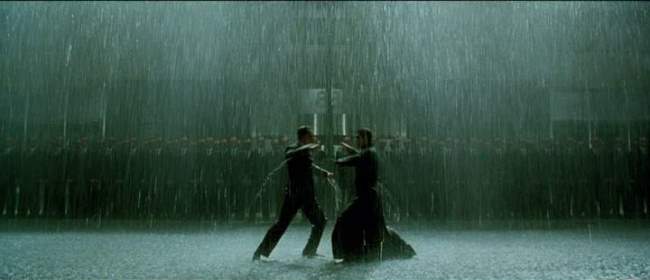
The Power of The One: The Oracle makes clear in her meeting with Neo that the “power of the one” comes from the Source, and that this power is necessary to communicate with the source. From a SciFi standpoint, the explanation for this is clear – the power of the one is based on the sentient learning program embedded in Neo from birth (the Architect tells Neo this at the end of Reloaded). As is documented in my Man-Machine-Interface essay, this is what gives Neo the power to attack the machines in the real world. Neo has Sysadmin-like powers so that he (the sentient program portion of Neo) is able to reboot the Matrix.
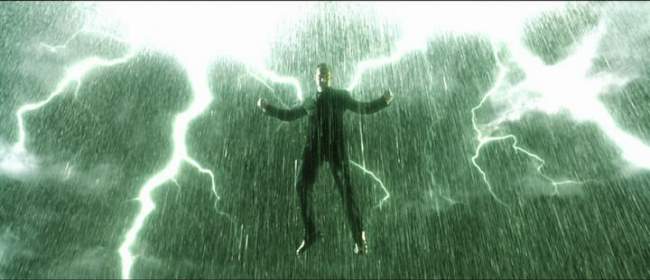
Getting Back to a Steady State: In Reloaded, Neo, with significant prompting from the Oracle has effectively wiped out the Architect’s negative feedback control system (meaning a cybernetic control system that “negates change from an initial goal state). The thresholds were exceeded, and the entire control system spun out of control. This, after all was the Oracle’s purpose. From a cybernetic perspective, the Oracle’s goal was to create a positive feedback loop (increasing change from an initial goal state). In doing so, she effected the complete destruction of the negative feedback system that had managed human-machine relations for the better part of 600-800 years. When a cybernetic control system exceeds its thresholds, it is possible for the system to again regain a steady-state, but almost never is it possible to return to the previous steady state. This truly is the Oracle’s purpose. By effecting out-of-control change (by creating the anomaly that is Mr. Smith), the Oracle created a situation where both the humans and machines would need to work together to stave off elimination of their species. The proposed steady state (peace) would have to be founded on a completely different set of assumptions. This would necessitate changes in the operation of the Matrix, and a far more integral relationship between the humans and machines.
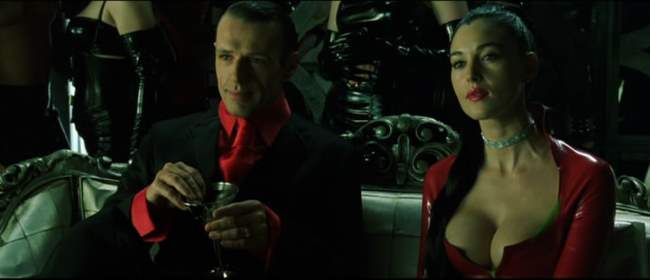
The Philosophical Aspects: Matrix Revolutions, even moreso than the previous films, is replete with interesting philosophical references from Hinduism, Christianity and various writers that ideas such as freewill and determinism, the nature of reality, the notion of purpose, and so on. In totality, the Matrix is a virtual cornucopia of ideas which ends up leading towards a larger integration of purpose, one which serves to unite the needs of man and machine in their struggle to survive. That these ideas are melded into a very compelling story – one which can almost completely divorce itself from the SciFi aspects and still work is pretty amazing. One can easily view the trilogy from the perspective of Neo as a messianic figure who’s story arc involves the coming of age, the sheding the bonds of slavery, and eventually the recapturing of humanity’s (and the machine’s) salvation. The Matrix Trilogy is one of the very few movies which have spurned an ever increasing number of philosophical analysis books – truly this is rather unique, and itself something to be celebrated.
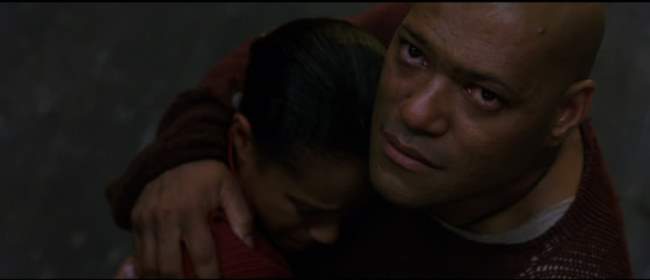
The Acting: While much has been said about some uneven performances, by and large, the leads in Matrix Revolutions turn in very solid performances. Keanu Reeves deserves additional credit for the incredible work he in preparation for the part – his martial arts and wire work in Revolutions are just terrific. Hugo Weaving turned in a supporting performance worthy of what I would consider an Oscar nomination. His monologue (“Why Neo, why?) near the end is absolutely riveting. However some of the secondary actors, most notably the “kid” (Clayton Watson) were pretty bad. Also, there were some dialogue issues in Revolutions which could have been worked a bit more (shortening the Trinity “you gave me one more chance” scene, for instance). In light of the incredibly ambitious goals for Matrix Revolutions, its not too surprising that some of the details could have been worked more.
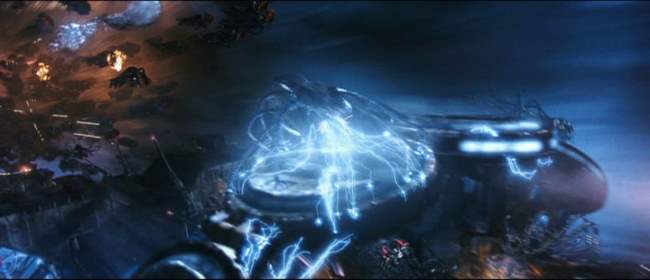
The FX: Matrix Revolutions has some of the most impressive FX on film. Regardless whether or not you hate the film, the quality and enormity of the FX we see in Revolutions is a wonderful cap to the series. From an FX standpoint, the Dock Fight was an absolutely monumental undertaking. This combination of CG, miniatures, full-sized models with human actors, and motion-capture provided one of the great battles ever seen on film. Because of the speed and chaos, like many elements in Revolutions, it really does take an extra watching or two to really get the sense of what’s happening. But once you aren’t overwhelmed by the enormity of it, the pace of the battle and the actions of the machines make sense. In fact, it becomes clear that the dock fight is one of the most significantly choreographed combat scenes ever put on film.
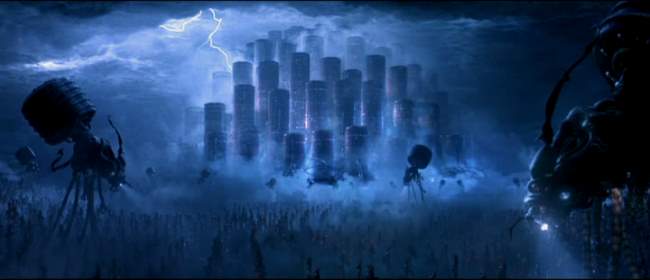
The Visuals: Visually, Matrix Revolutions is a stunning movie. While the bulk of the visuals use a blue-red color sceme, the familiar green matrix colors are also prominently displayed. Similarly, we get bursts of yellow-orange colors denoting machines disconnected from the Matrix. Shadows are liberally used in the larger panoramic scenes, while many of the close-ups are more starkly lit. Overall, the mood of the blue-red color scheme is reminiscent of Star Wars’ Empire Strikes Back, in that we get the same darkened atmosphere.
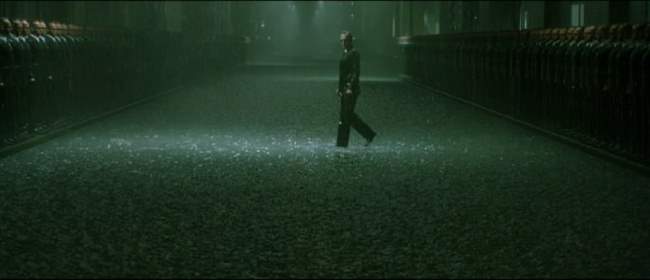
The Score: Don Davis’ music for Matrix Revolutions provided a terrific accompaniment. The diversity, from industrial sounds to haunting choral arrangements served to heighten the tension and energy at pivotal scenes. Probably the highlight of this was at the beginning of the Super Burly Brawl between Neo and Mr. Smith where the piece, “Neodammerung” signals the final confrontation.
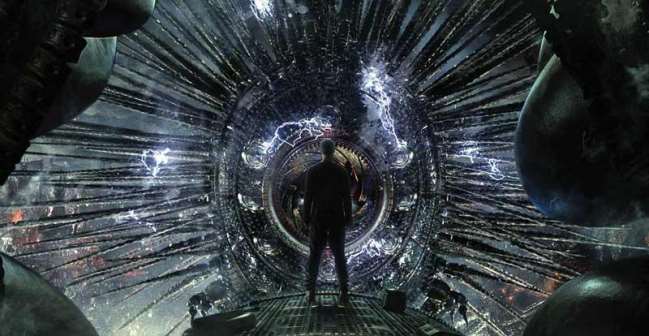
The Bottom Line: The Matrix Trilogy is one of the most ambitious projects ever undertaken in movies. It combines almost two distinct storylines – one based on philosophy and religion and the other based on science fiction – with revolutionary effects, great action and truly interesting ideas throughout. As a cyberpunk dystopia, it’s hard to find a situation worse than the one posed in the world of the Matrix. While the majority of its viewers found fault with Revolutions, especially the ending, I personally found enormous satisfaction out of both the ending and the movie as a whole. While I certainly agree that there are some acting and dialogue issues, as a whole, Revolutions was a terrific ending an absolutely terrific trilogy.
Matrix Revolutions Page 2: More Screencaps –>>
~See movies similar to this one~
Movie Review By: SFAM
Year: 1997
Directed by: Jean-Pierre Jeunet
Written by: Joss Whedon
IMDB Reference
Degree of Cyberpunk Visuals: Medium
Correlation to Cyberpunk Themes: Medium
Key Cast Members:
Ellen Ripley: Sigourney Weaver
Annalee Call: Winona Ryder
Dr. Jonathan Gediman: Brad Dourif
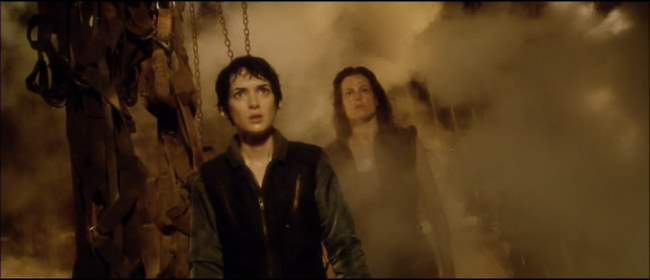
Overview: While Alien 1 and 2 were both stellar movies, the later two sequels definite suffer in comparison. Still, Alien Resurrection provides a significantly different Ripley than is encountered in the first three movies. Ripley is a clone, and an altered one at that. In fact she’s a merging of both the alien and human. With a significantly different approach to visuals and storytelling, Alien Resurrection may not equal the quality of the first two, but certainly can be considered original, which is sometimes a feat in itself for a sequel. The cyberpunk elements, while present, are still sedated, similar to the first Alien (I don’t really consider Alien 2 or 3 to have enough to consider them cyberpunk).
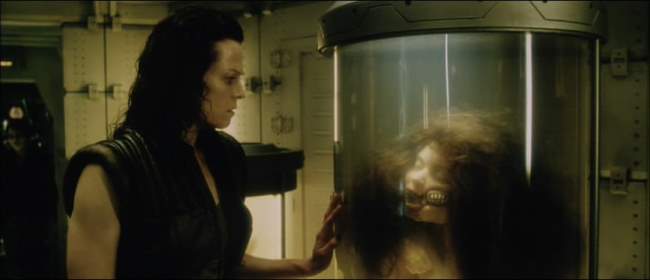
The Story: Two hundred years after her death, Ripley (Sigourney Weaver) has been cloned for the purpose of giving birth to the Alien Queen inside of her at the end of Alien 3. It’s not the corporation this time, instead it’s the good ‘ole government. While it’s never really fully explained how the melding of the two came about, you basically have to “roll” with it if you want to enjoy the movie. In any event, Ripley somehow survives the birth of the Alien, and is kept alive for “study” purposes.
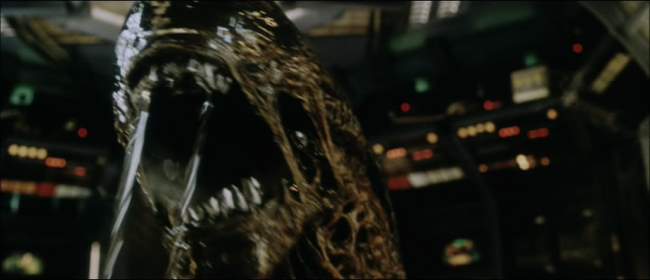
Meanwhile, the Alien Queen that Ripley births requires hosts for her eggs. Enter a group of mercenaries led by Elgyn (Michael Wincott). His group also includes Winona Ryder, Dominique Pinon, Ron Perlman, Gary Dourdan, and Kim Flowers. The mercenaries have captured a ship full of people in suspended animation, and have brought the victims to the military research ship for money and other goodies (including a few days sleep in a regular bed). Things go bad when fanatatical crazed head scientist, Dr. Jonathan Gediman (Brad Dourif) makes the mistake of leaving three of the Alien births in the same cage. Two of the aliens kill the third, who’s acidic innards then create a hole in the floor, thus forming a jail break. From there, its on – aliens are in control and have a field day in eating up the poor humans who can’t escape on time. But unfortunately for the Queen, her DNA has been melded with Ripley’s and her second generation offspring has turned out differently than intended.
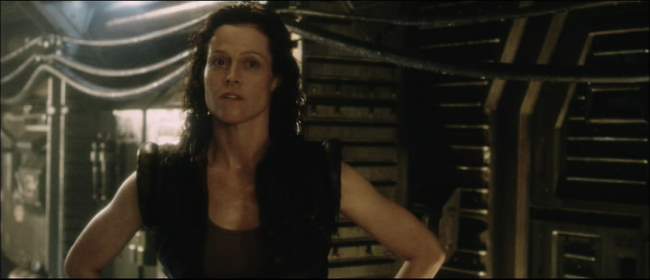
Ripley is Different in Resurrection: In Resurrection, we don’t get the tired, beaten down Ripley from the previous two movies who somehow manages to persevere and survive. Instead, Weaver takes to her genetic change with a gusto that mixes just the right mix of alien swagger, camp, and tender humanity. Most importantly, Weaver doesn’t take herself too seriously here. Ripley’s smirks more than anything else make the impossible set-up bearable. Its almost as if she’s saying, “Yeah, this is Frankenstein 4, but you knew the monster (me) needed to come back from the dead if there was to be a sequel, right? Just roll with it and we’ll be OK.” In short, Weaver almost single-handedly makes this sequel work. Ripley’s one liners (such as, “Who do I have to fuck to get off this ship?”) sometimes even come close to equaling those in Aliens. However, this approach can only go so far - if they ever plan on doing an Alien 5, they’re gonna need to revive Abbot and Costello!
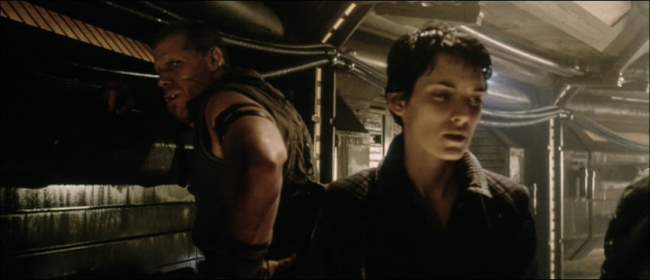
The Rest of the Cast: While Weaver shines, the same cannot be said of the rest of the cast. Some of the member are really hit or miss, while others fail altogether. Winona Ryder’s role was a bit too much for her to pull off. First she had to be a believable mechanic (Kaylee, she’s not!), and then had to be an undercover resistance member and finally had to work as a {SPOILER – highlight to read} second generation android. I don’t know who could have worked all three of these aspects into a coherent whole, but Ryder was not able to pull it off. Although, Ryder does shine in some of the scenes – especially those that are similar to Ripley’s role in the first movie where the Ryder is struggling to maintain sanity when everything is stacked against them. For other examples, Brad Dourif as the crazed scientist is too over the top, and Dan Hadaya as the military commander comes off as a complete imbecile. Two notable standouts are mercenaries Ron Perlman and David St. James – both turn in very solid and interesting performances.
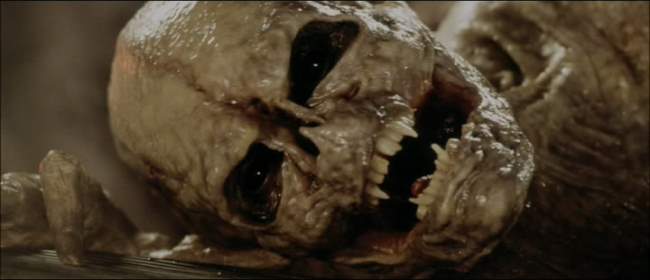
The DNA Mixing: OK, the DNA mixing explanation is just too hokey to work. Joss Whedon deserves some credit for at least not running away from this impossible task – instead he makes it a centerpiece to the story (but it still doesn’t’ work – then again, I don’t think anything would). Basically they needed a way of both recreating Ripley will still keeping her memories intact. Their work-around is to state that Ripley’s and the Alien’s DNAs melded together (I suppose this happened in the lava? Good thing they were able to retrieve it, ey?). OK, fine, but I have a few questions: Aliens are uniquely different from humans but their DNA is so close that its not distinguishable form one another? Or assuming the DNA was melded, how exactly did they know what they were looking at? More to the point, how did they figure out (even with lots of trial and error) to make two completely separate organisms out of the DNA? But even taking the ocean of salt needed to buy that explanation, how is it that an alien organism who grows by eating the material in the lungs is able to read Ripley’s memories and retain them? Again, while this clearly is problematic, you really just have to roll with it if you want to enjoy Resurrection.
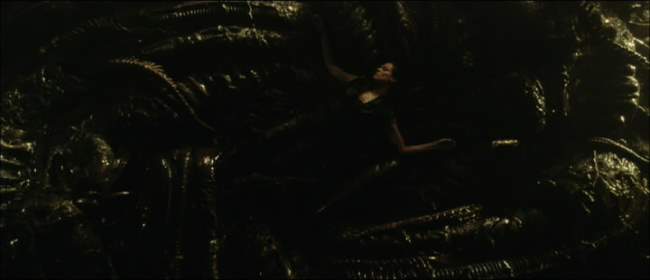
Genetic Manipulation Scare: Probably the scariest aspect of Alien Resurrection is the notion that in the semi-near future, genetics will be advanced enough and so well understood that even your basic crackpot scientists with the right equipment can play Josef Mengele in experimenting with mixing lifeforms to their hearts content. One can imagine a number of variations to this, but the jist of the concern is that its not too far a stretch to imagine that in the near future, less savory governments or corporations may be lured to do various genetic trials of this kind in the pursuit of fame and profit. This concept in Resurrection is as cyberpunk as one can get.
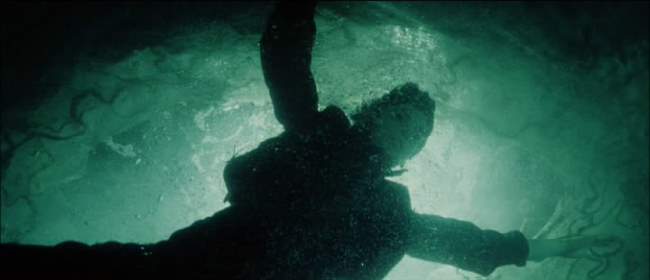
The Android: Unfortunately the back story is glossed over, but in Alien Resurrection, the androids have somehow developed a second generation android, one who is not beholden to human command. Not surprisingly humanity targeted them for termination, which caused the remaining second generation androids to burn out their communications devices and go into hiding. In Alien Resurrection, it’s the android who holds the tenets of humanity most dear. The android is more concerned with the fate of mankind than all the shallow and flawed humans in this movie. The android is even religious. One wishes this aspect of the androids was explored. If they truly feel that they indeed have a purpose for existence, how is this rationalized, and how have they changed the concept of a human deity to accommodate their self-worth?
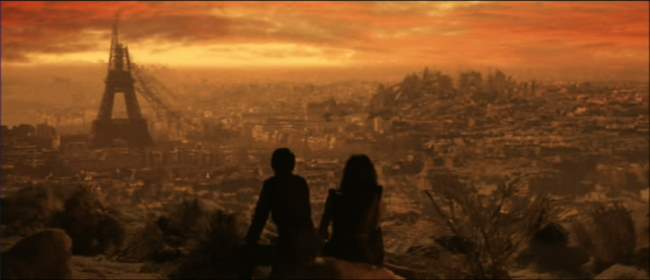
The Visuals: Director Jeunet and visual effects supervisor Pitof deserve credit for creating some wonderful visuals in Alien Resurrection. Resurrection contintually treats us to some wonderfully composed shots – shots that far exceed the qualities of the acting. Even if the plot and acting turn you off, the cinematography, wonderful set pieces, models and creature FX will help keep Alien Resurrection bearable. Like many cyberpunk films, a single color dominates the film – yellow in this case. Yes there are some blacks, but yellow seems to permeate all the key scenes.
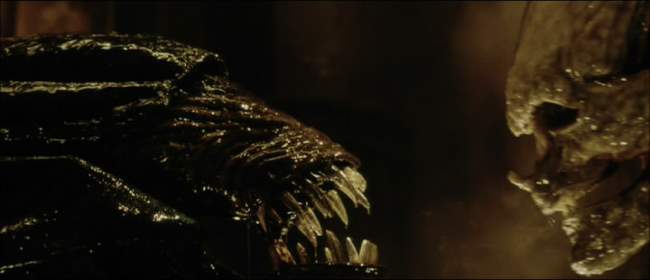
The Bottom Line: Yes, Alien Resurrection has an extremely problematic story within a flawed movie, but it ends up being more fun than it probably deserves. Even though the rest of the cast doesn’t always support her, Sigourney Weaver turns in a terrific performance. This, along with the originality, the wonderful cinematography and FX make Alien Resurrections a step up from Alien 3, and worthy enough to watch. While the cyberpunk elements are subdued, the android along with the genetics and dystopic civilization (destroyed by human wastes and technology) are enough to include it in this site. Alien Resurrection won’t flip your world like the first two did, but its still worth a watch.
~See movies similar to this one~
|











































































































